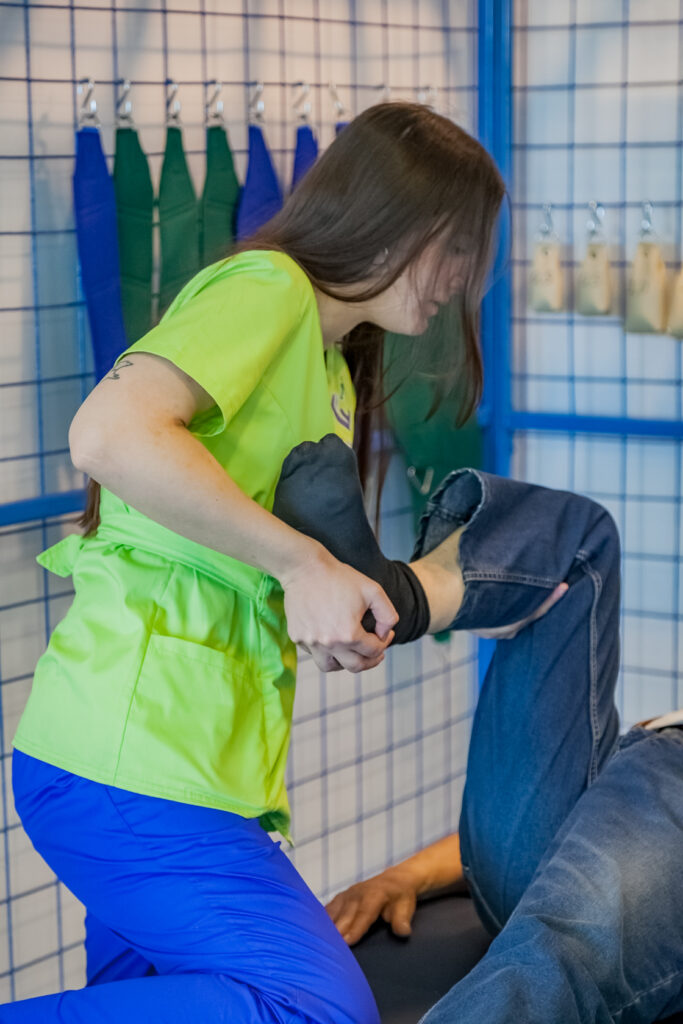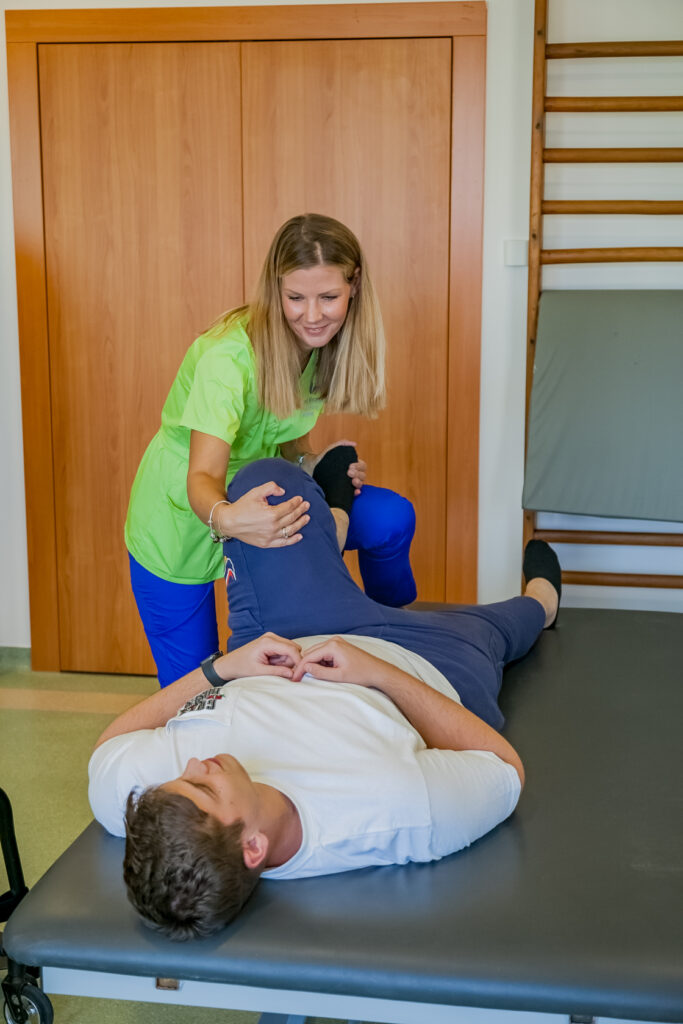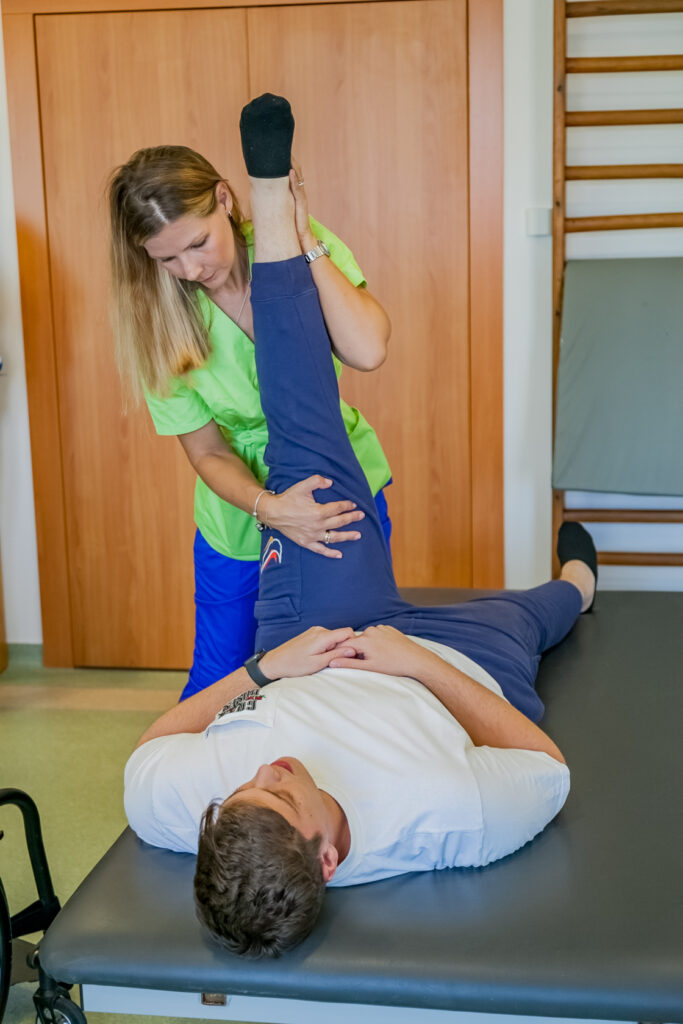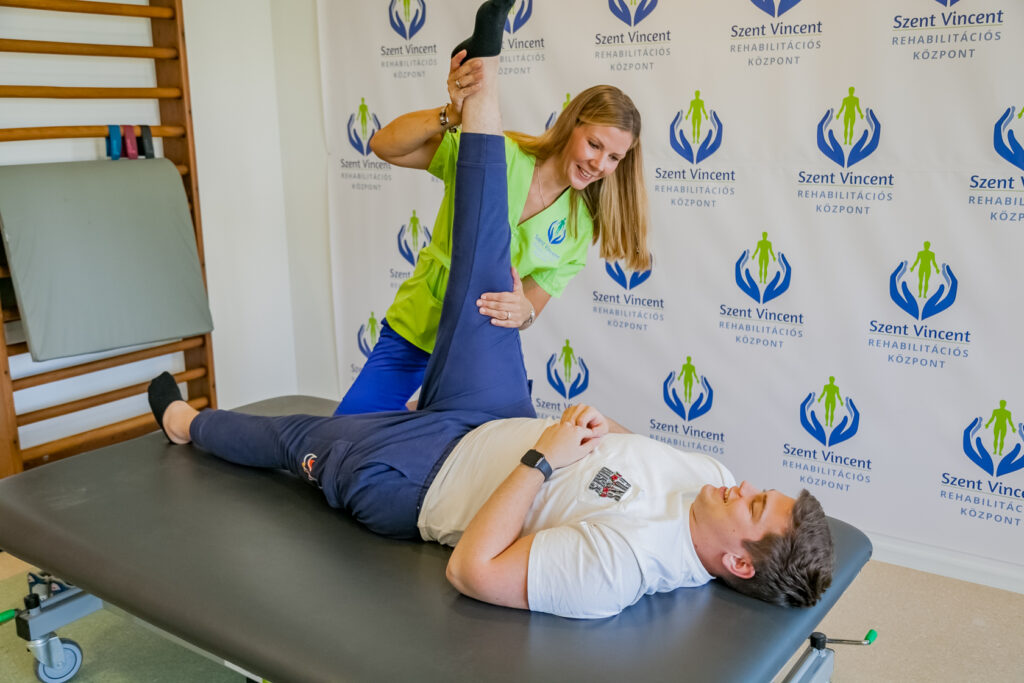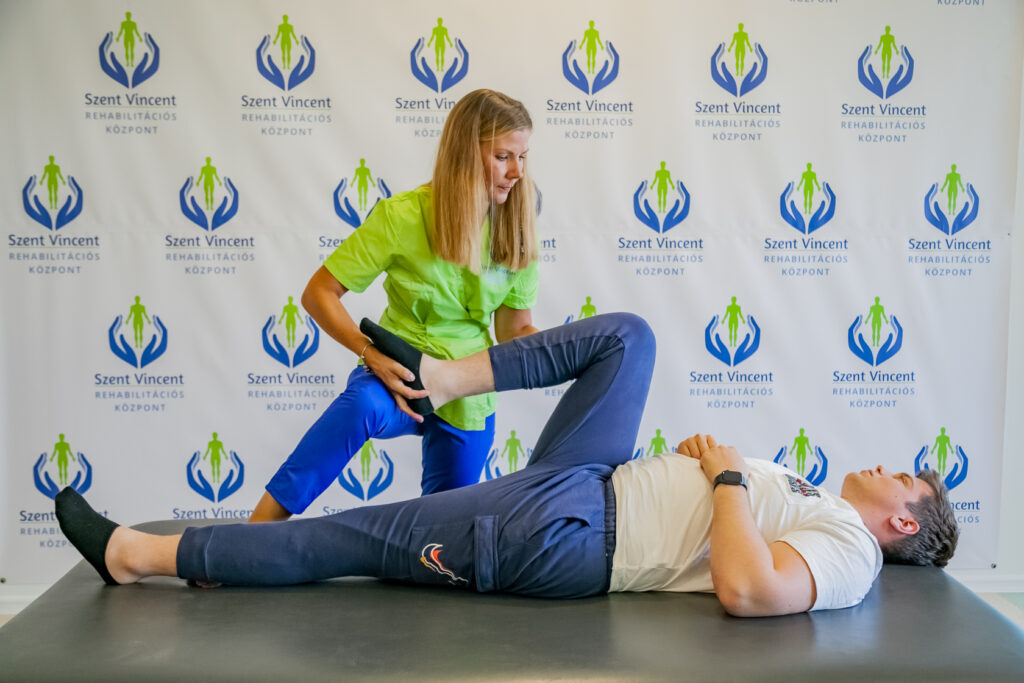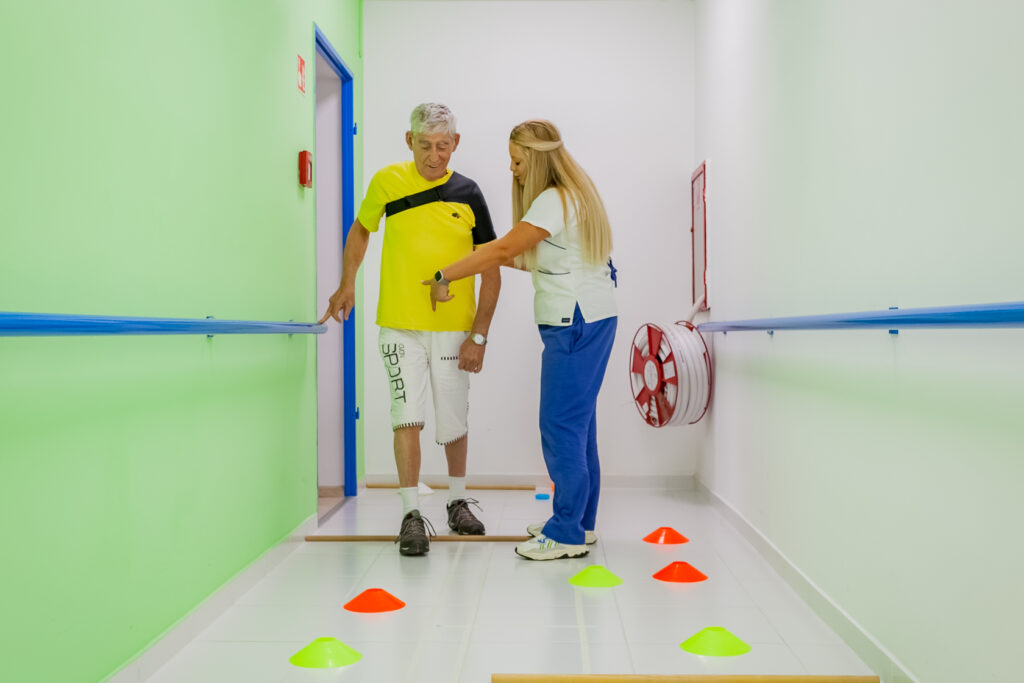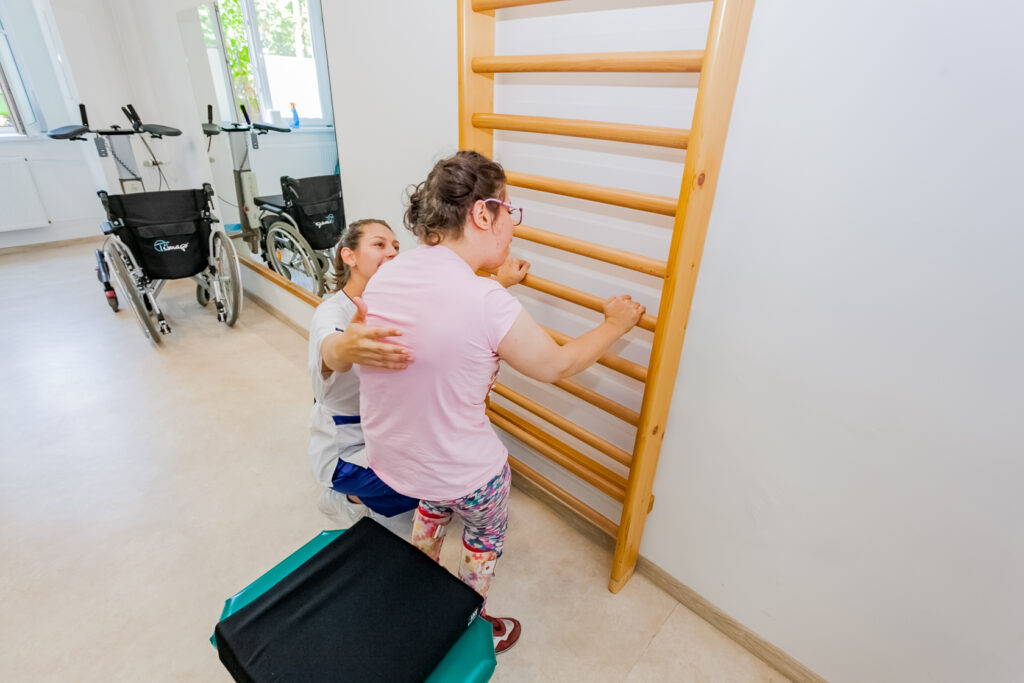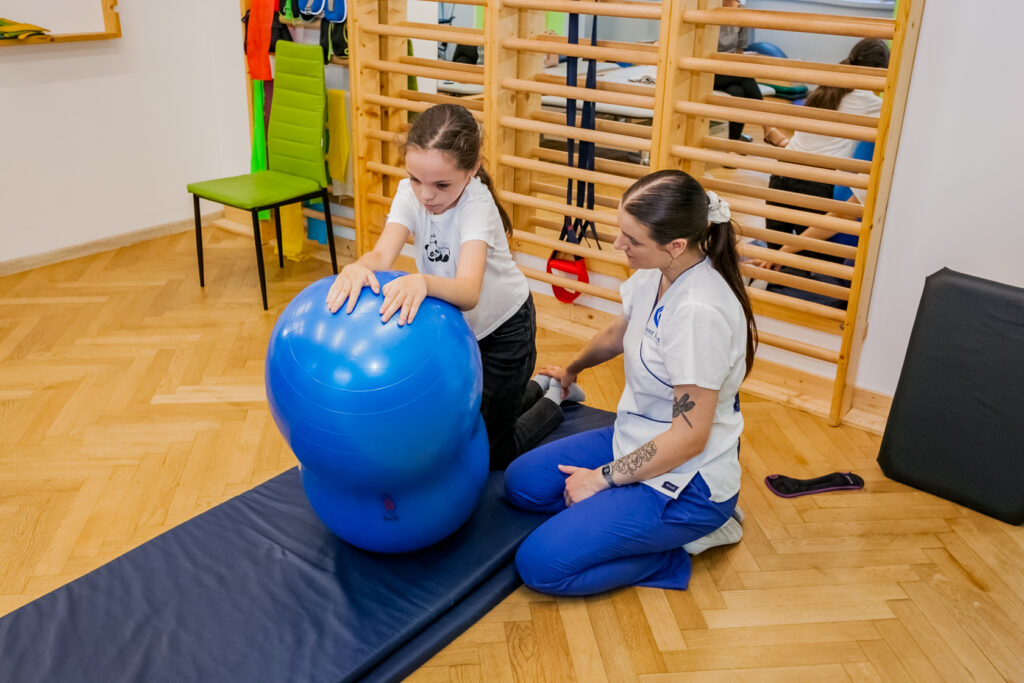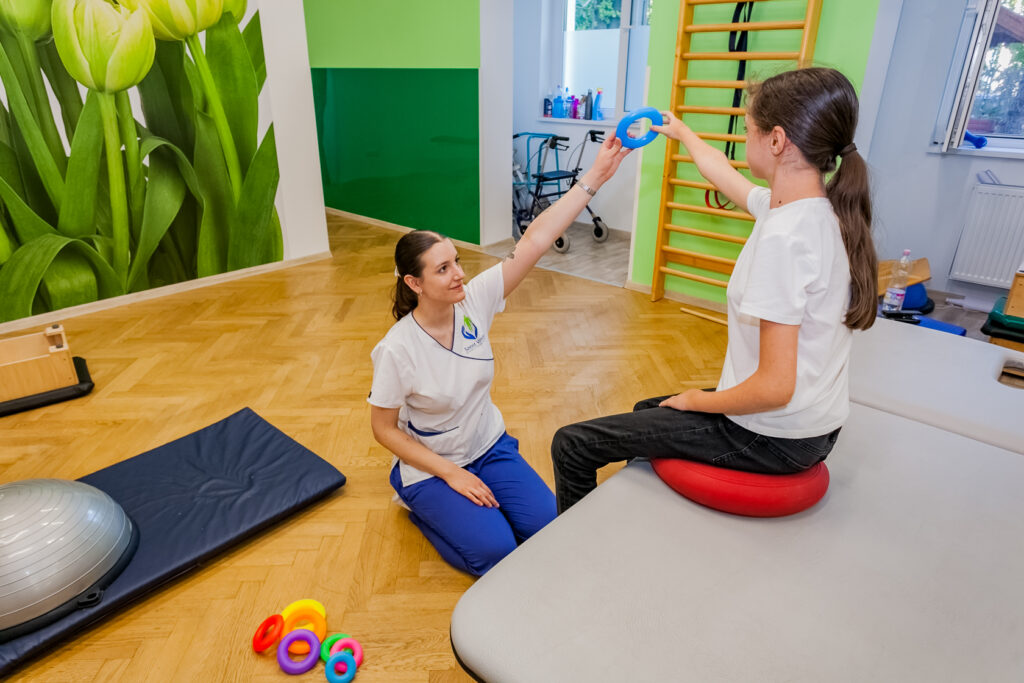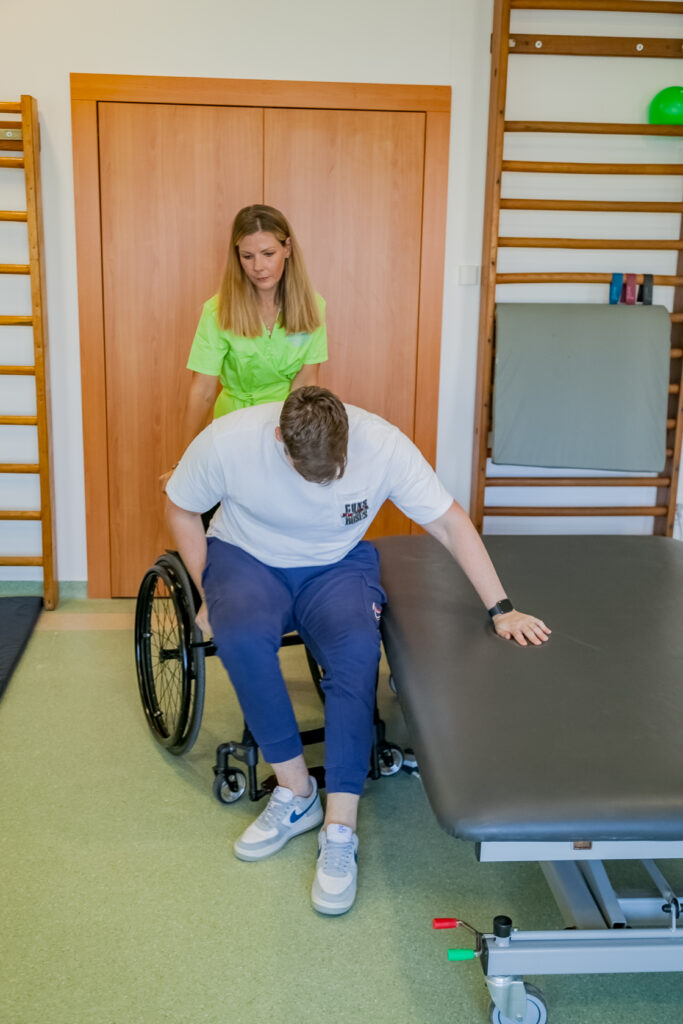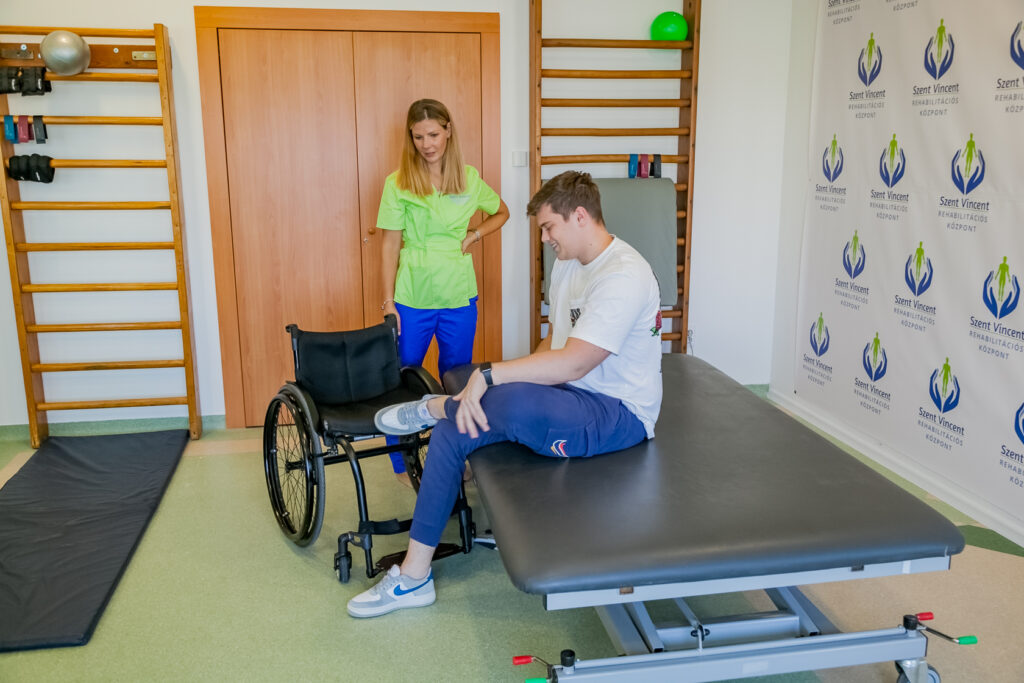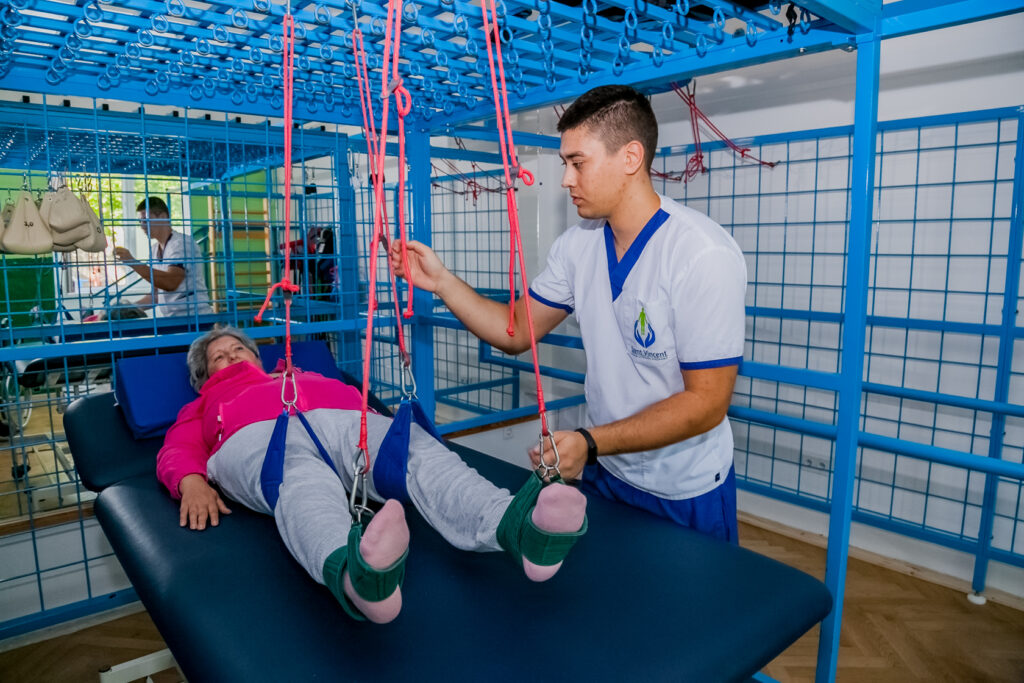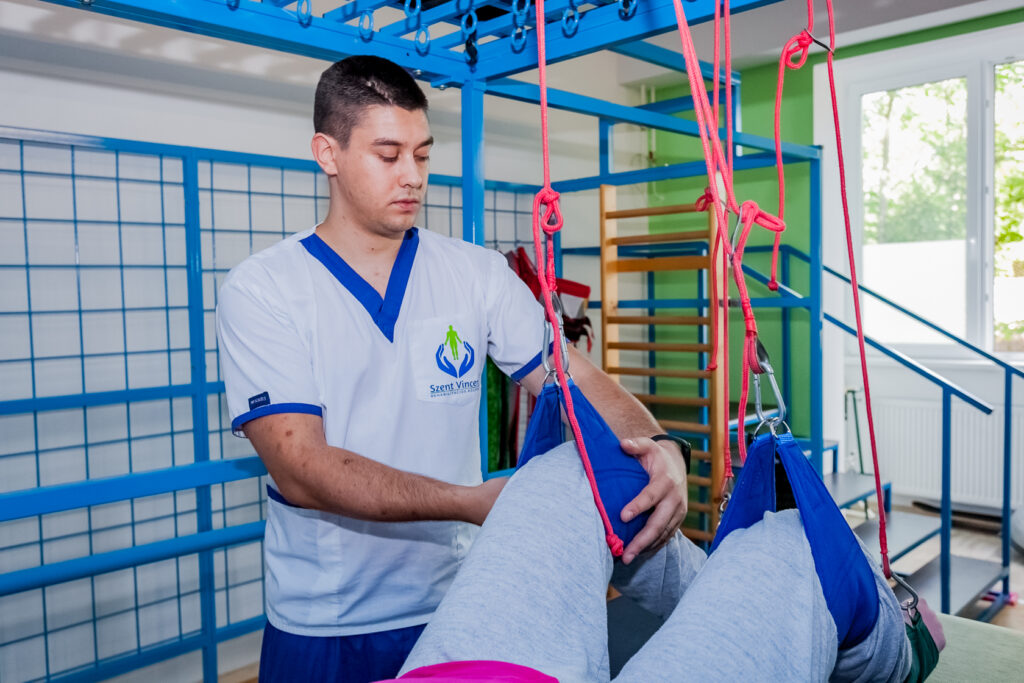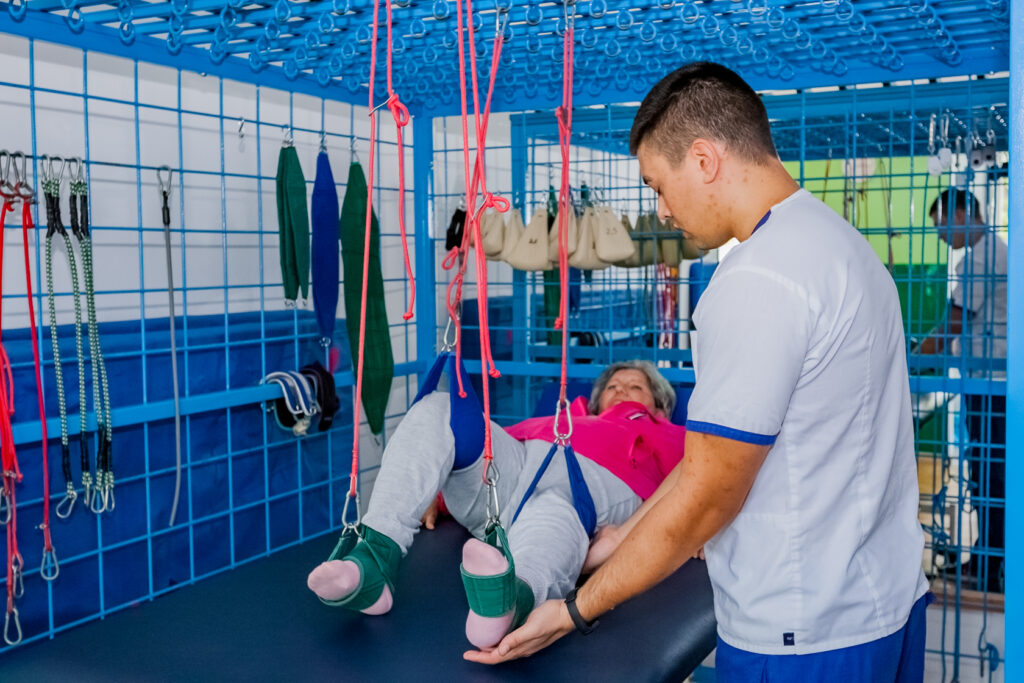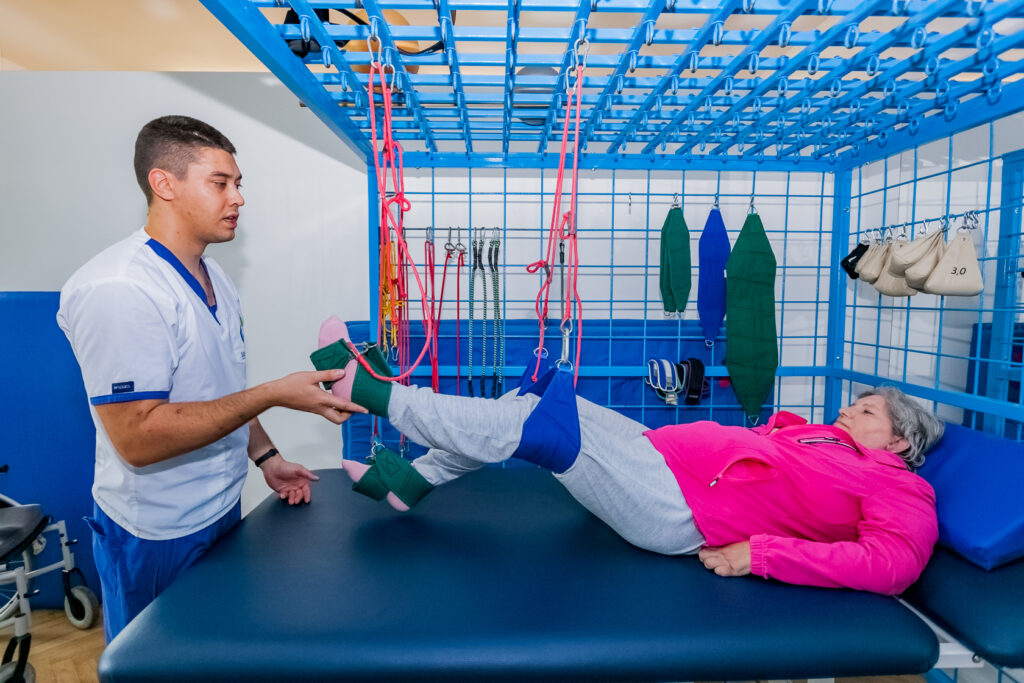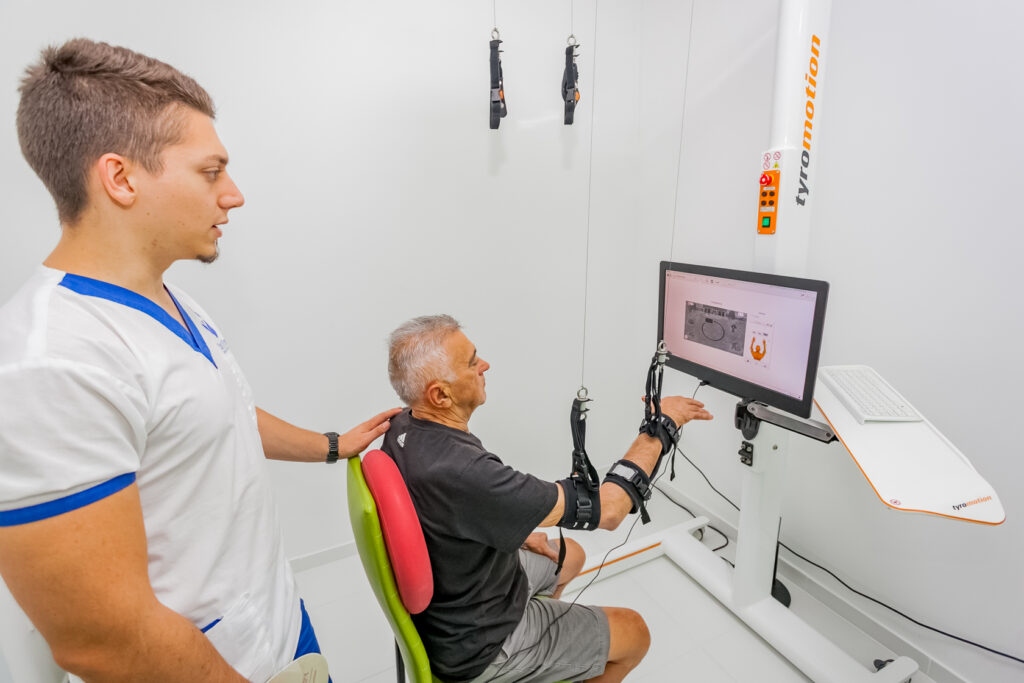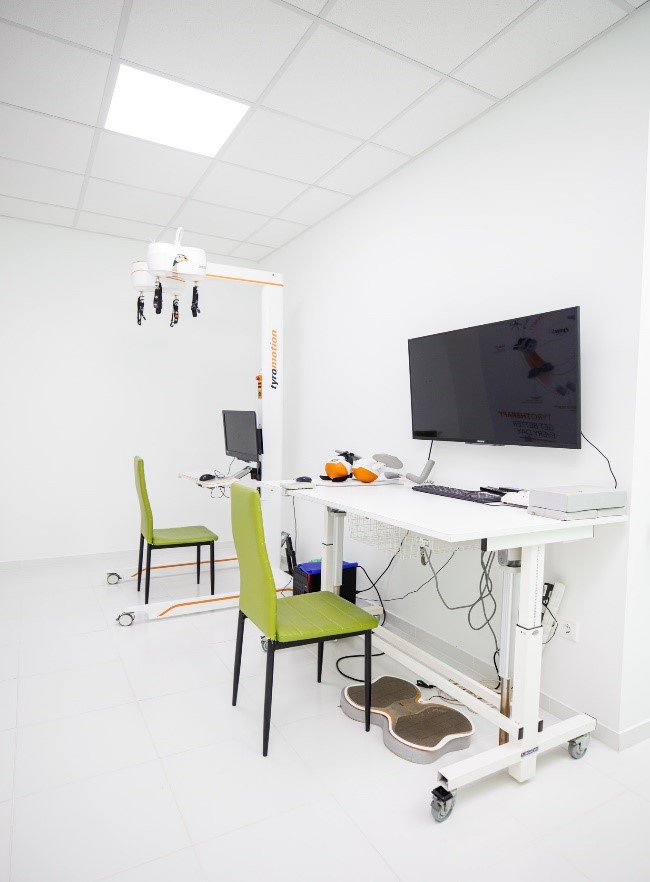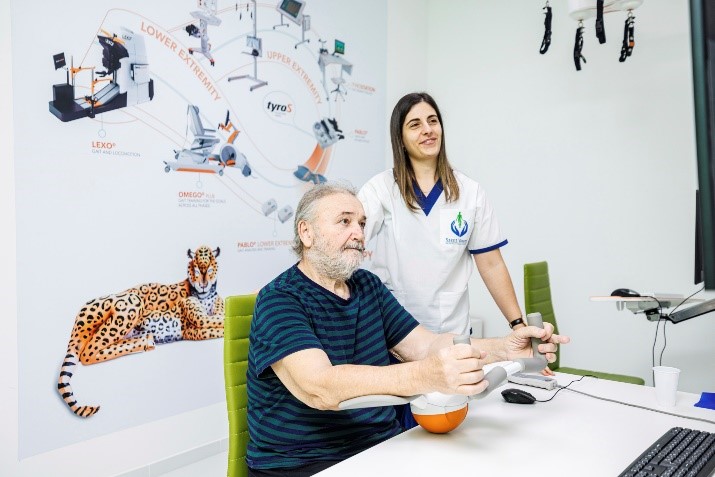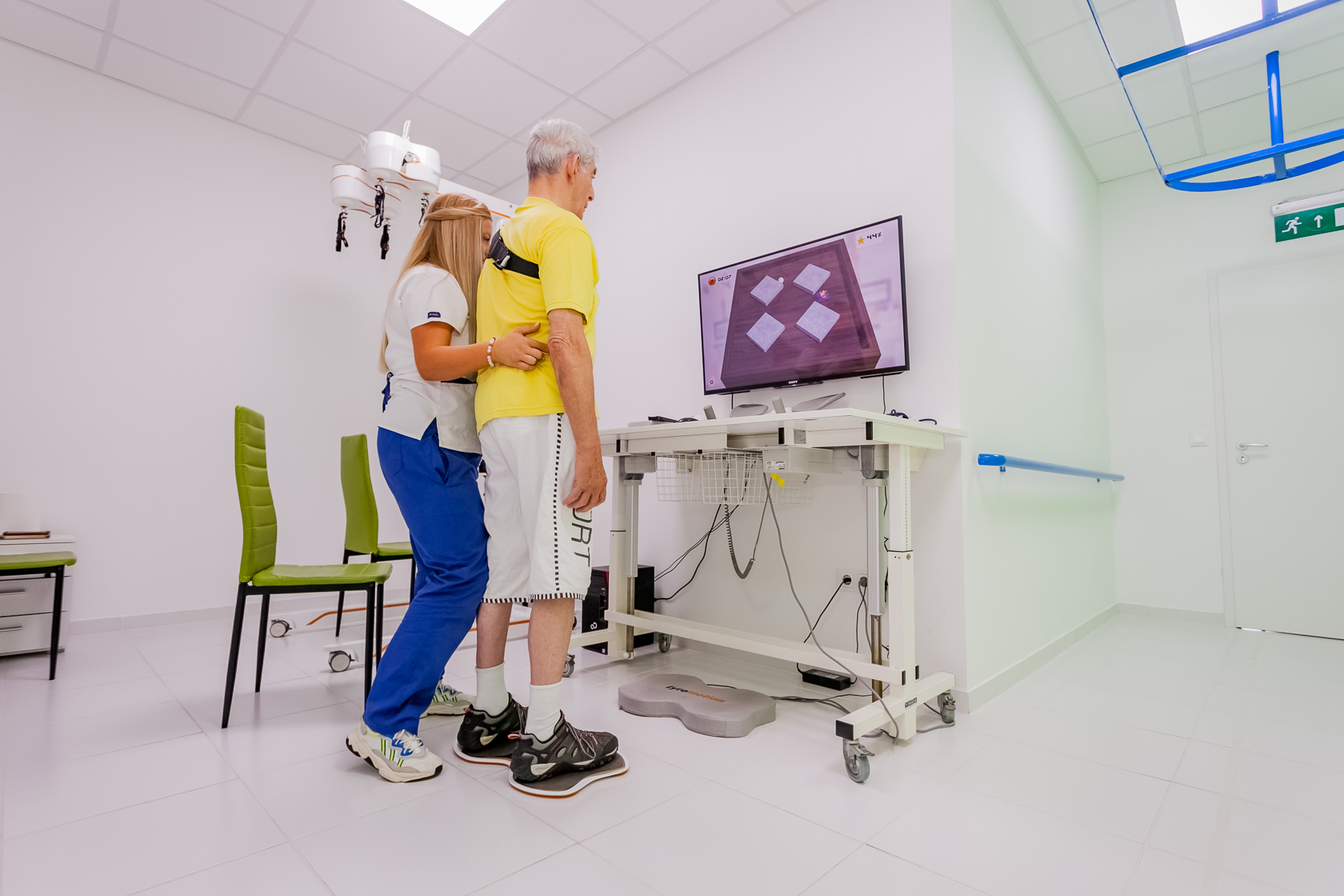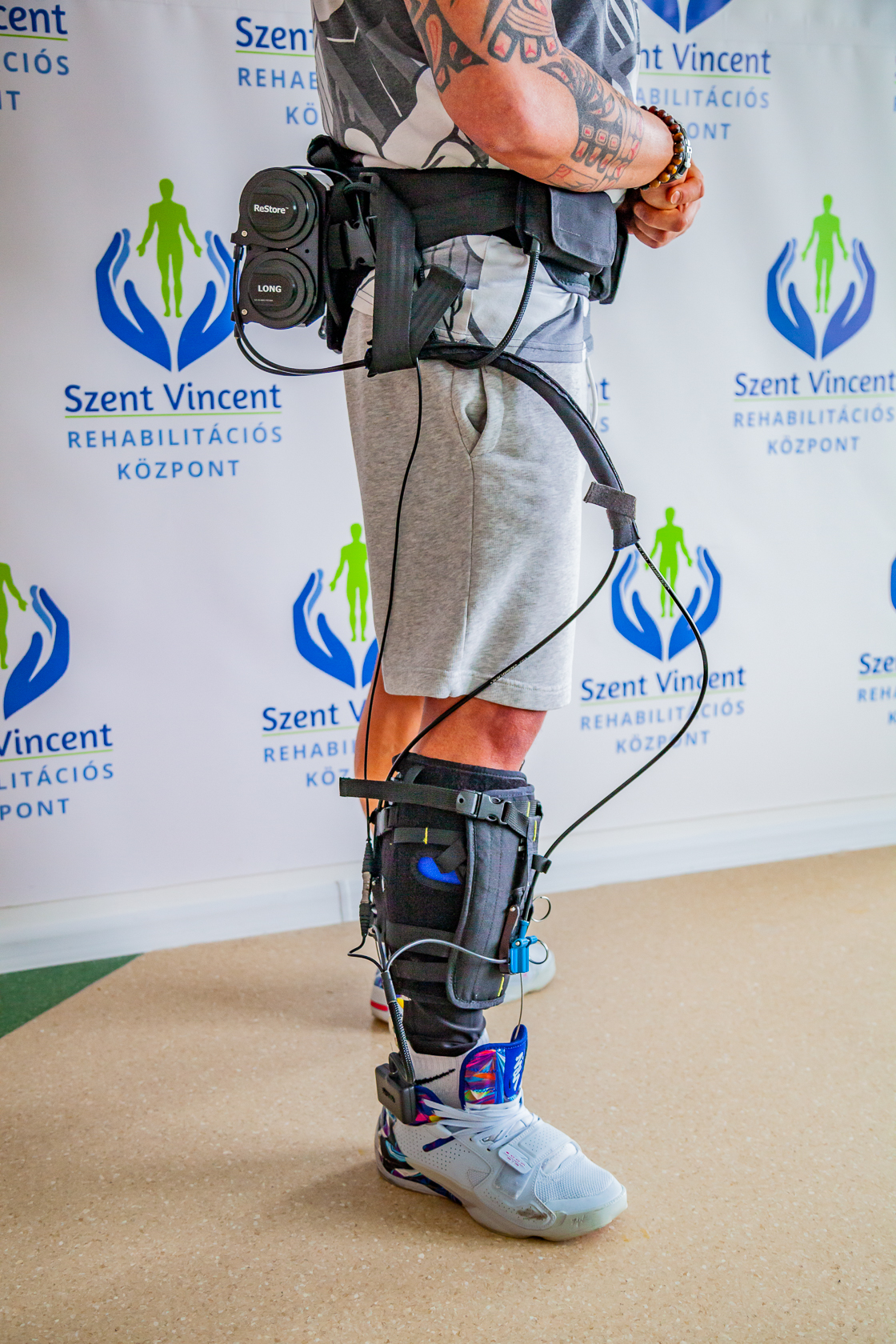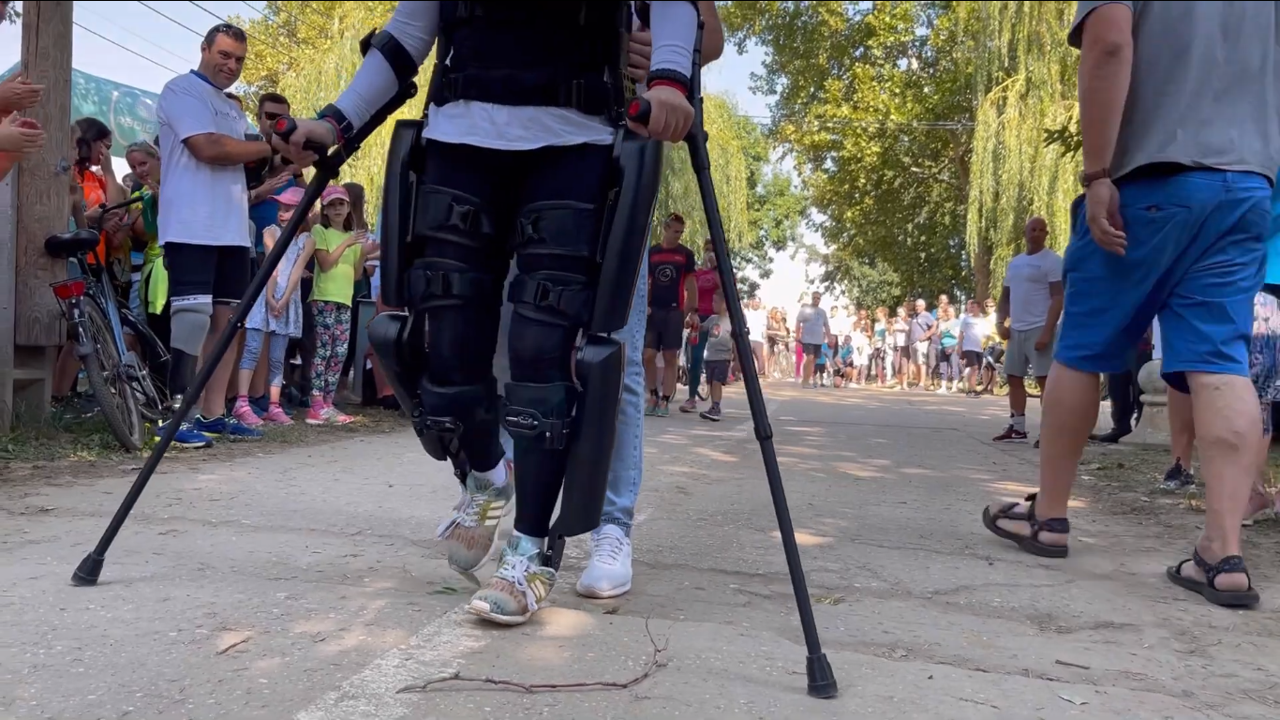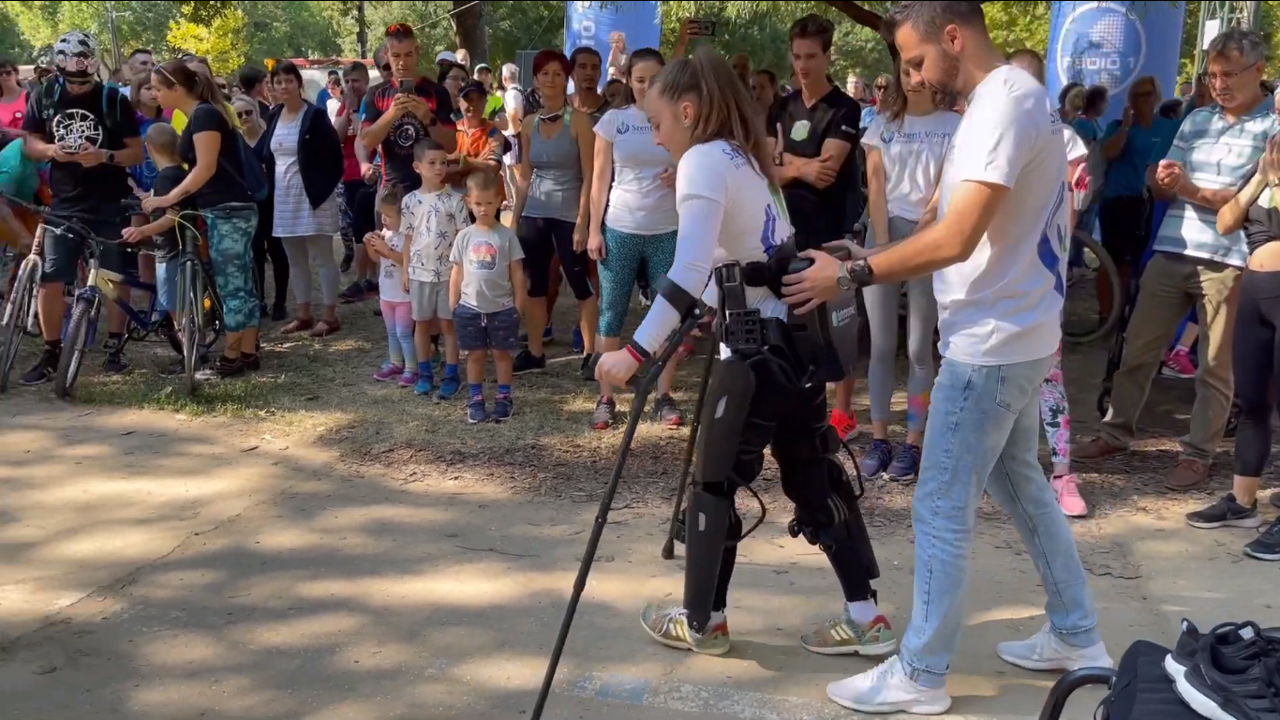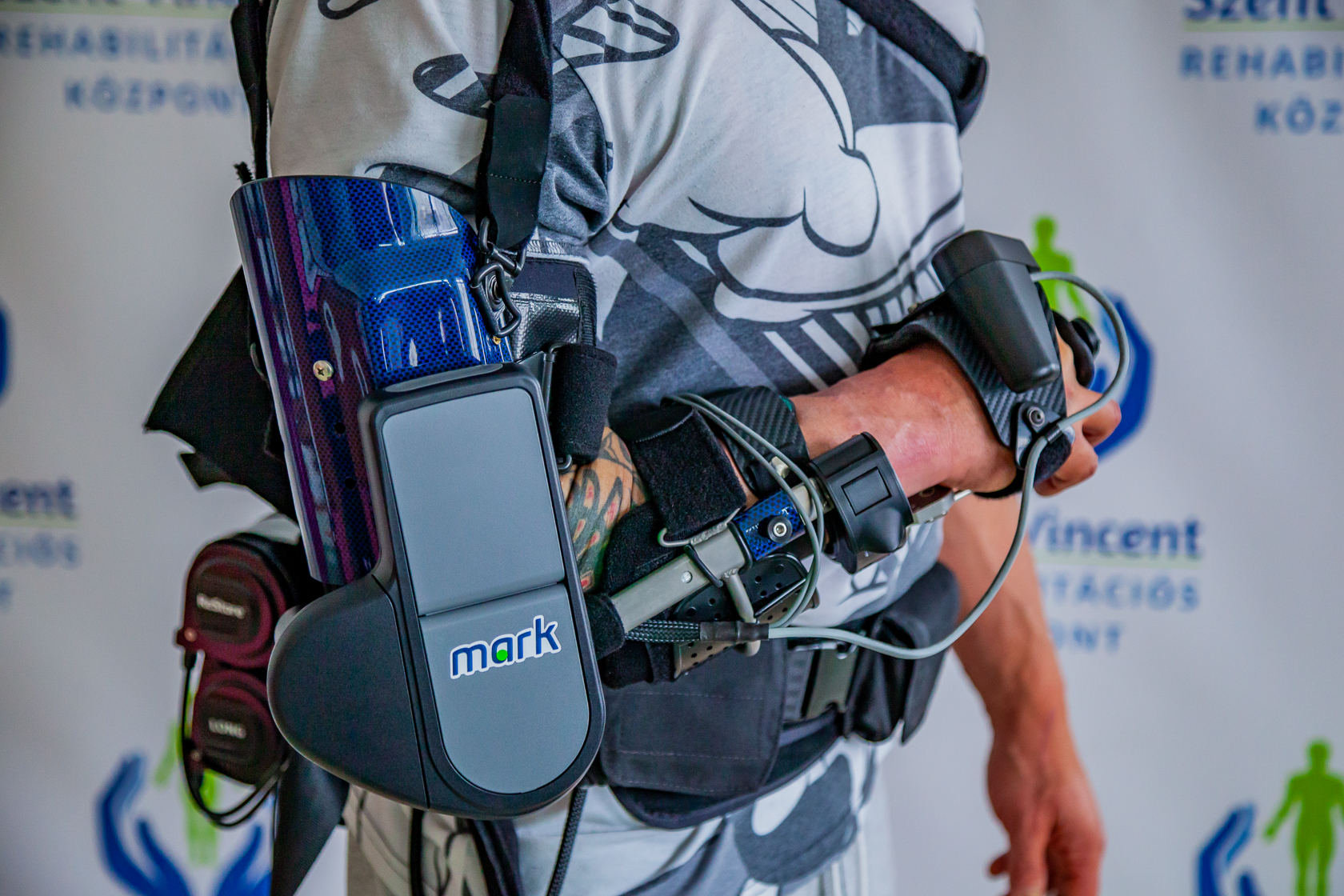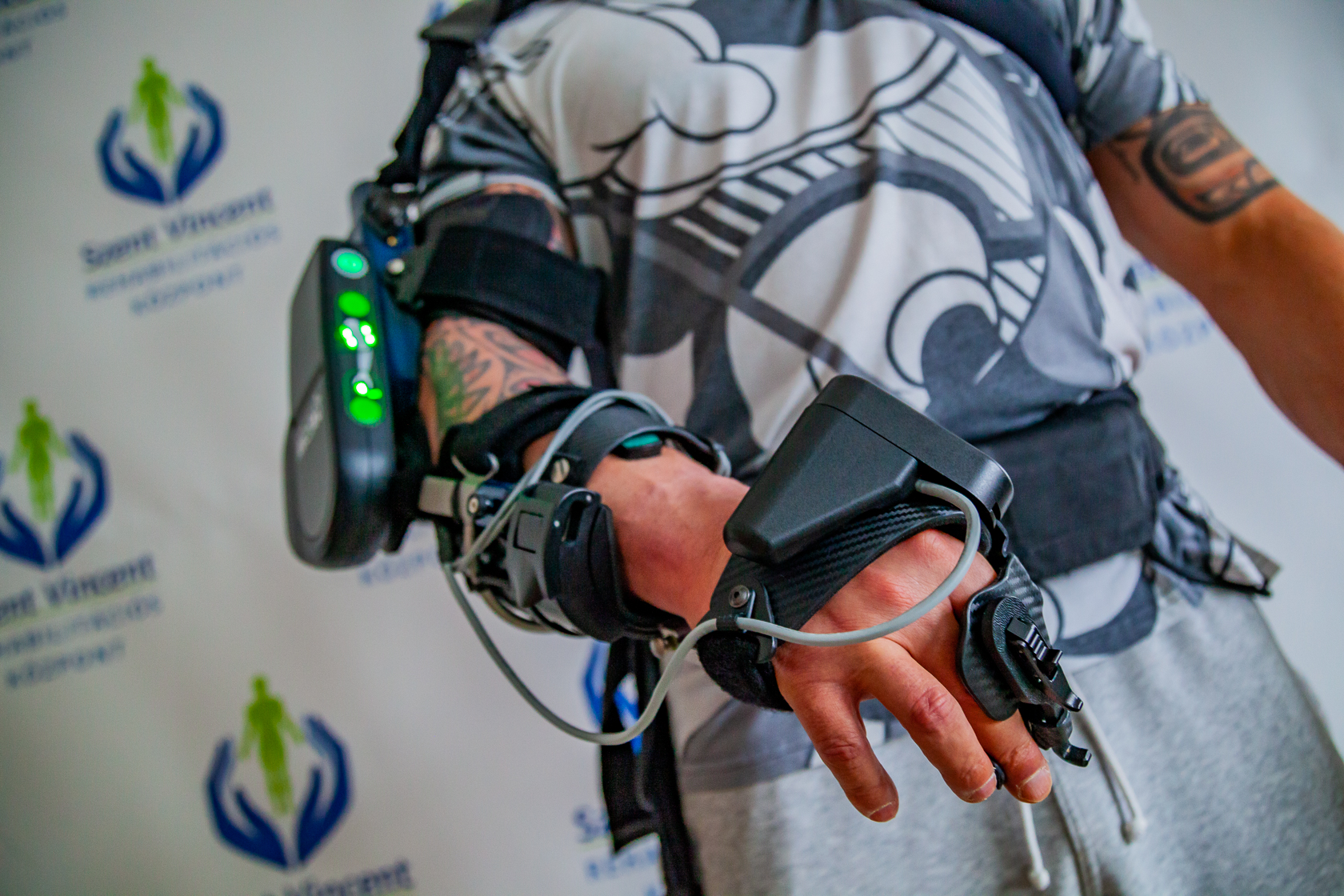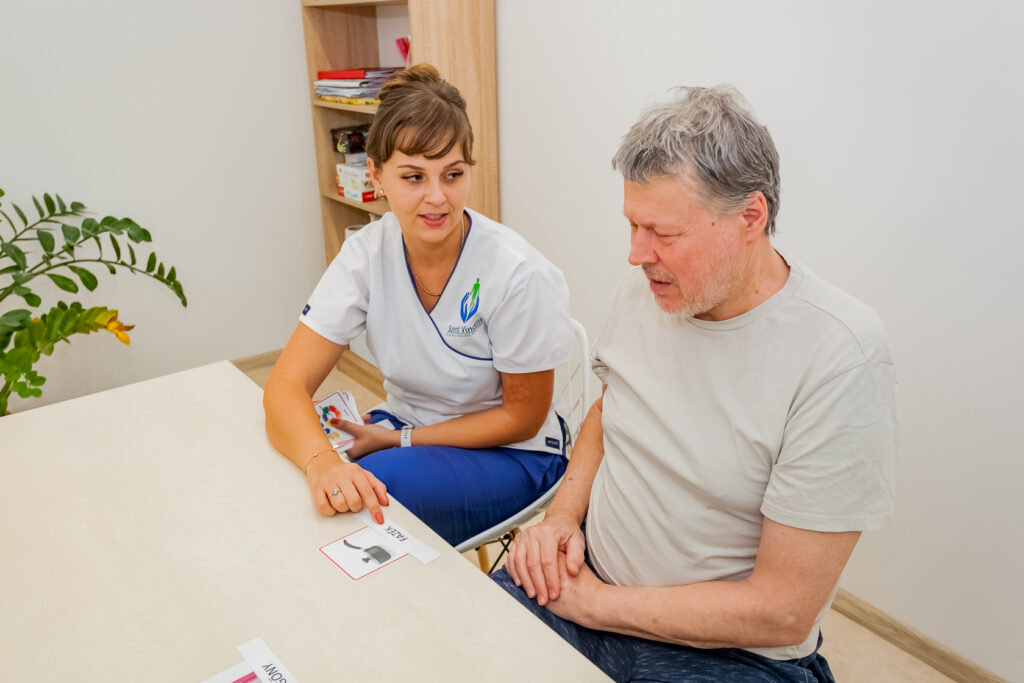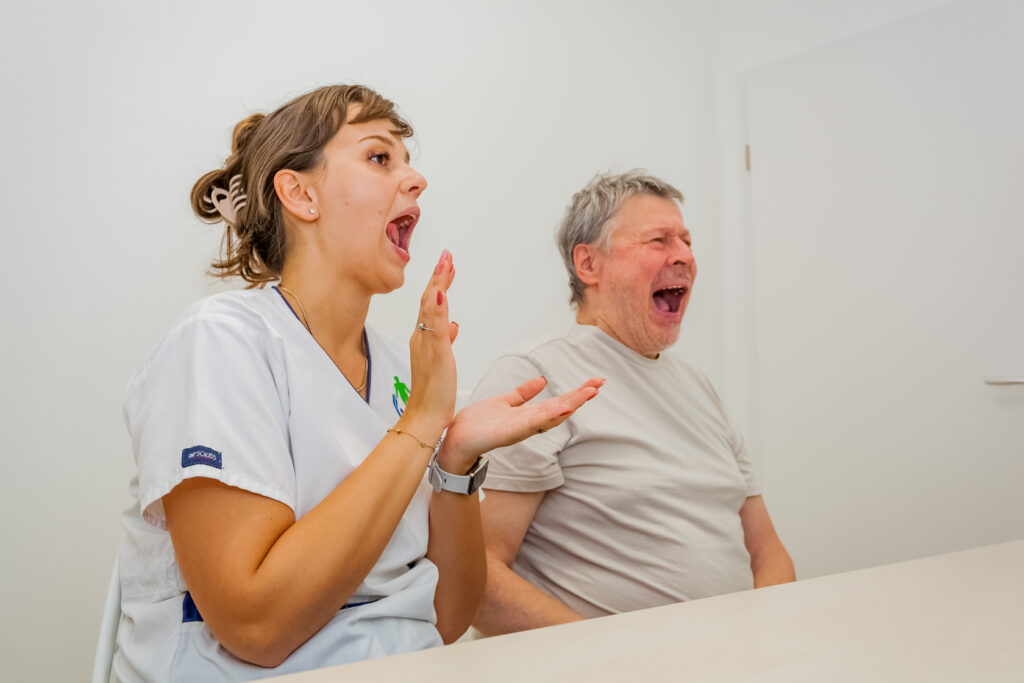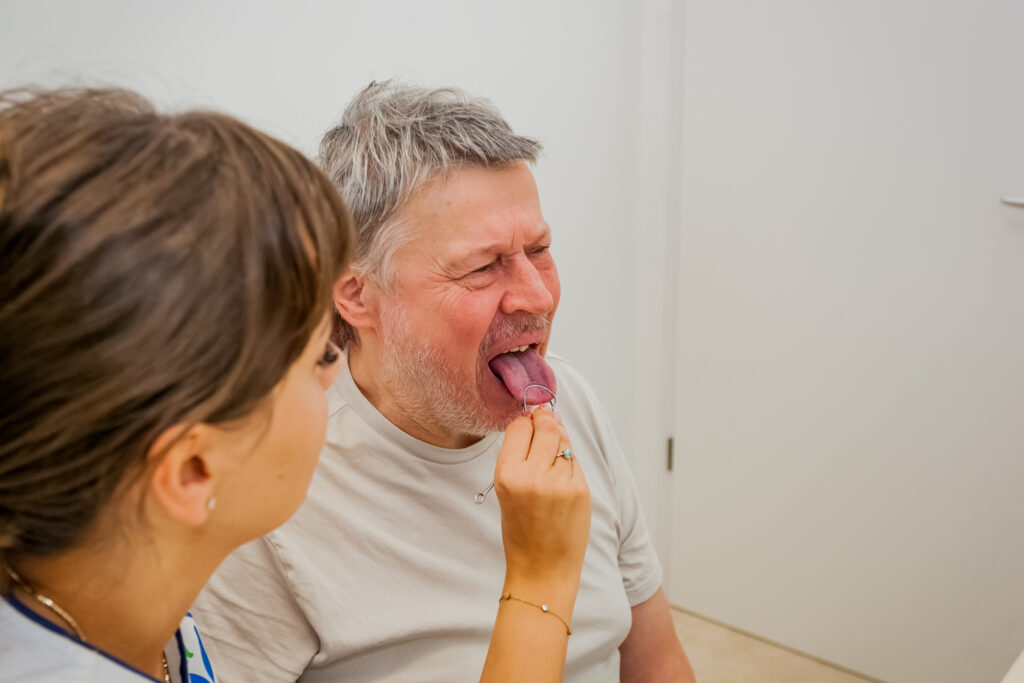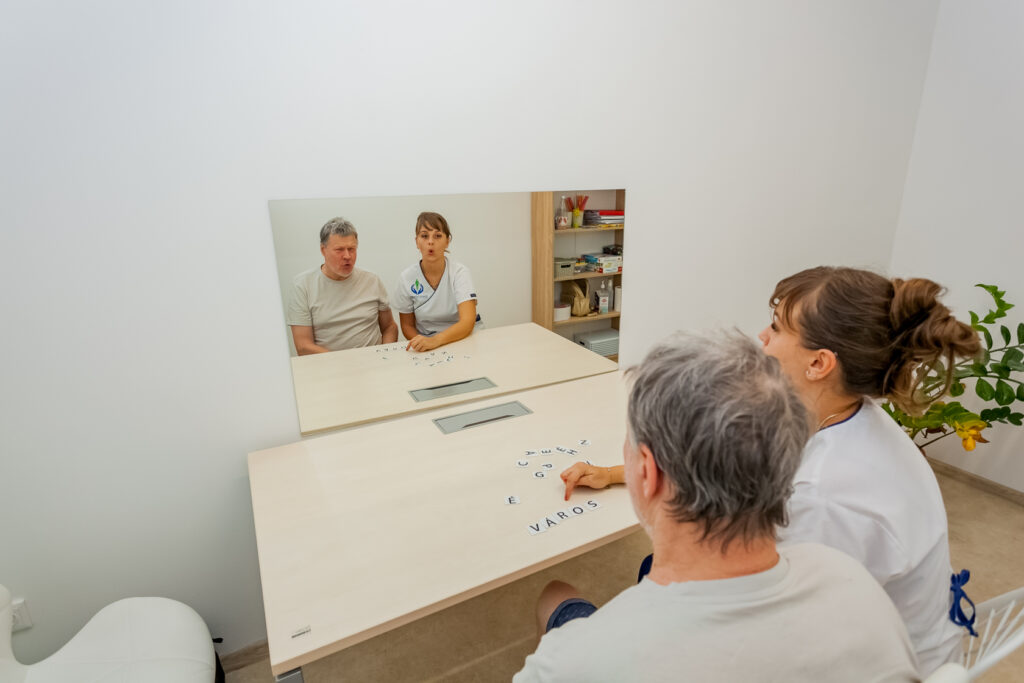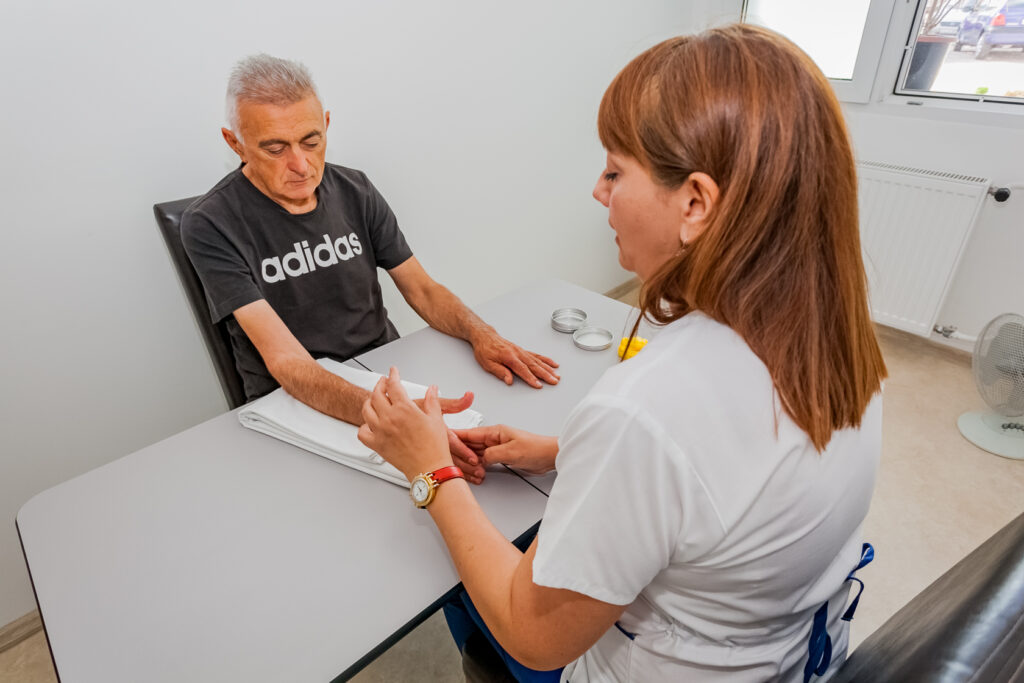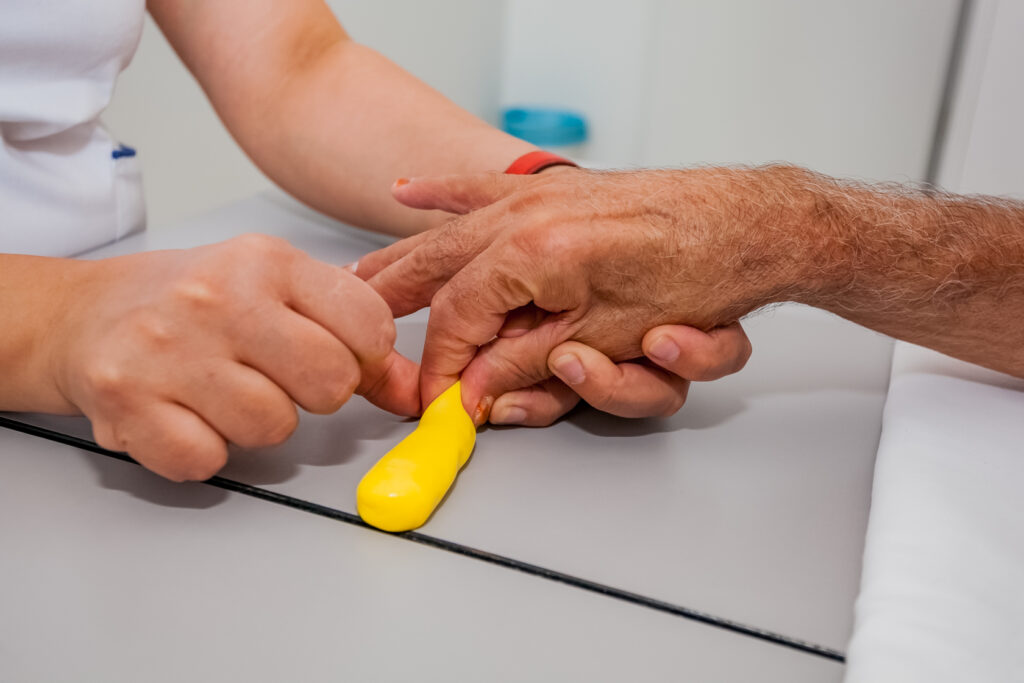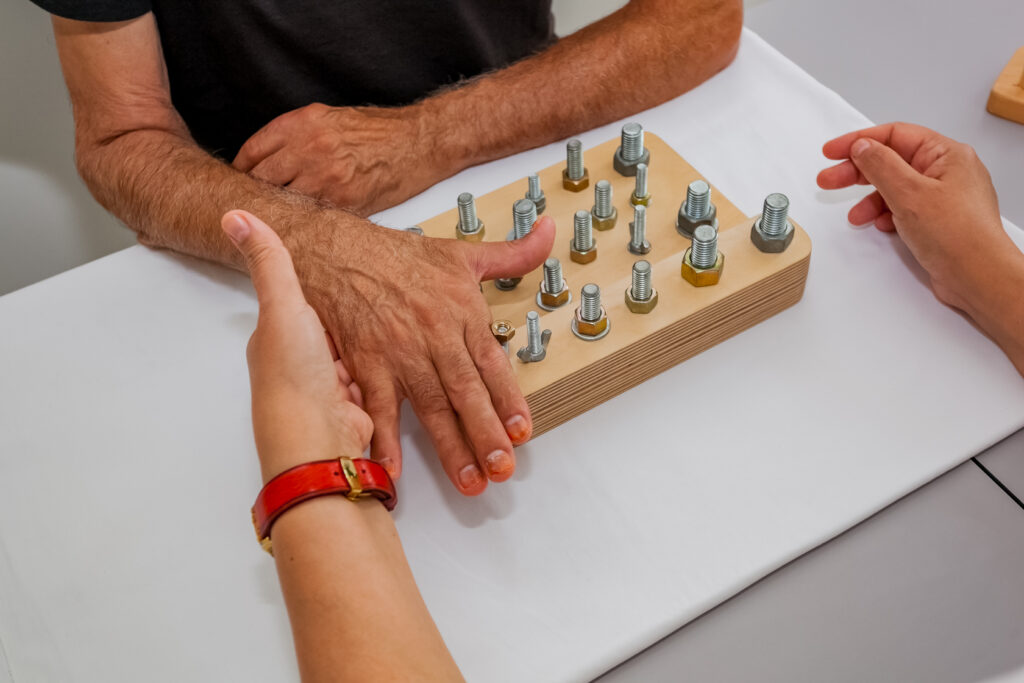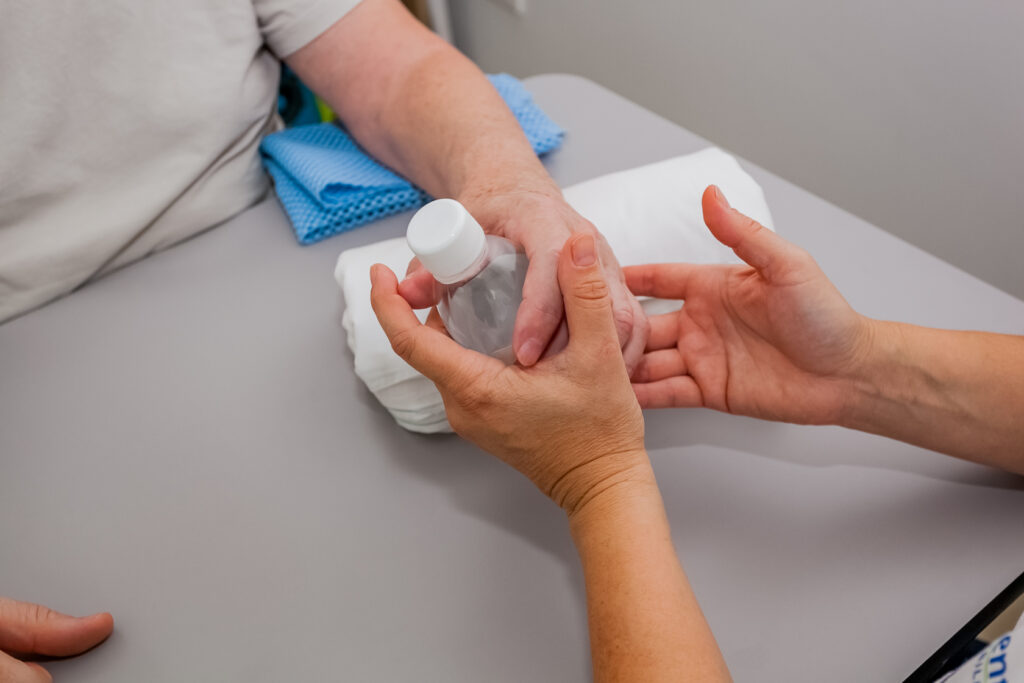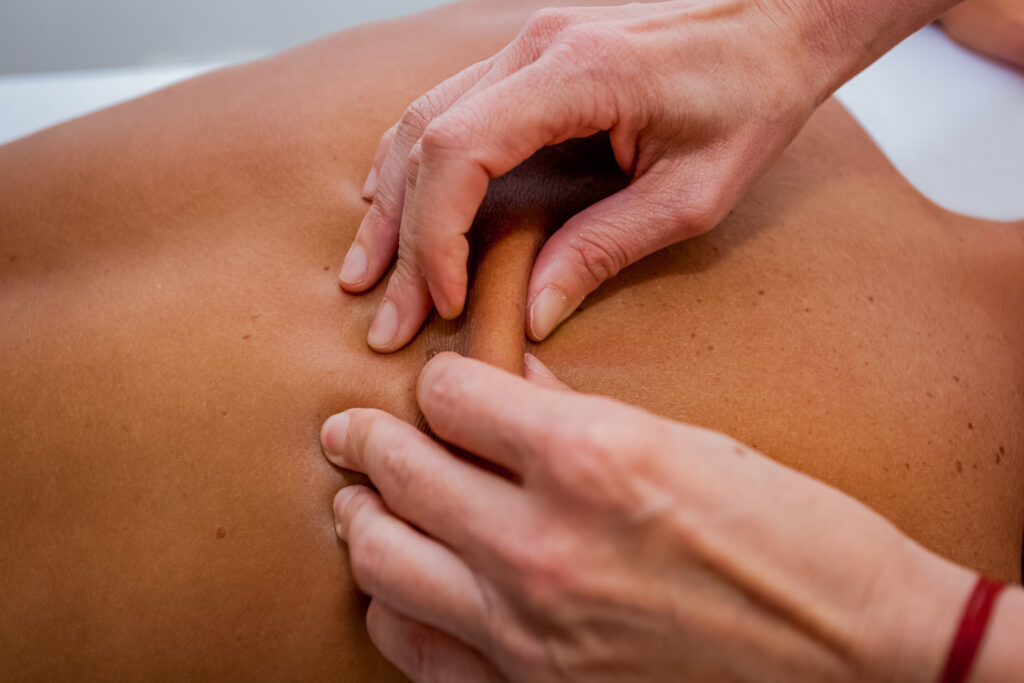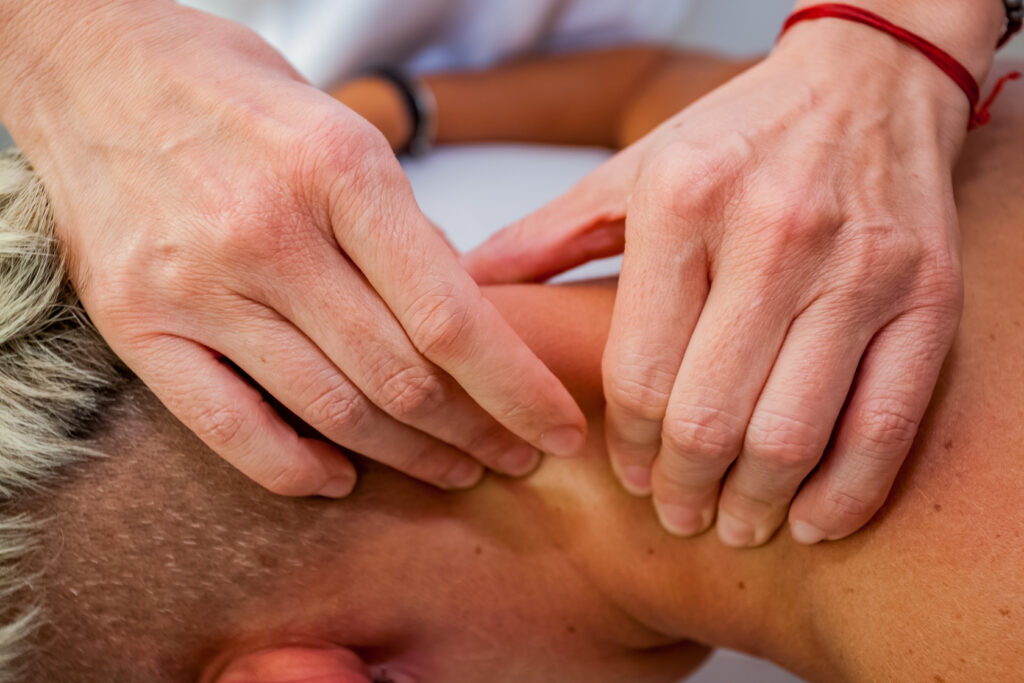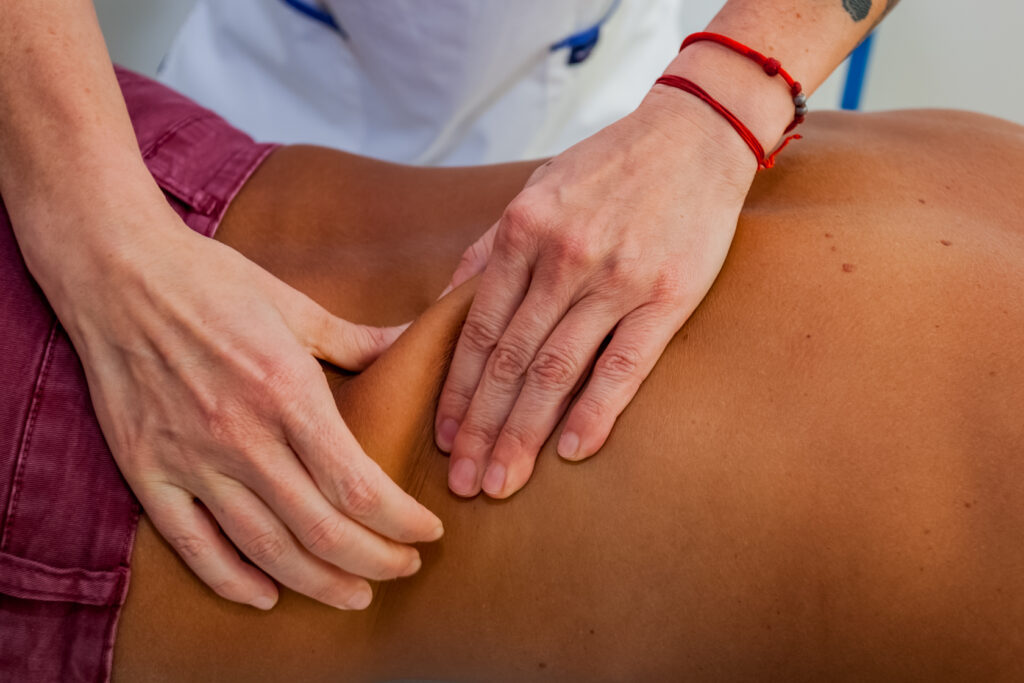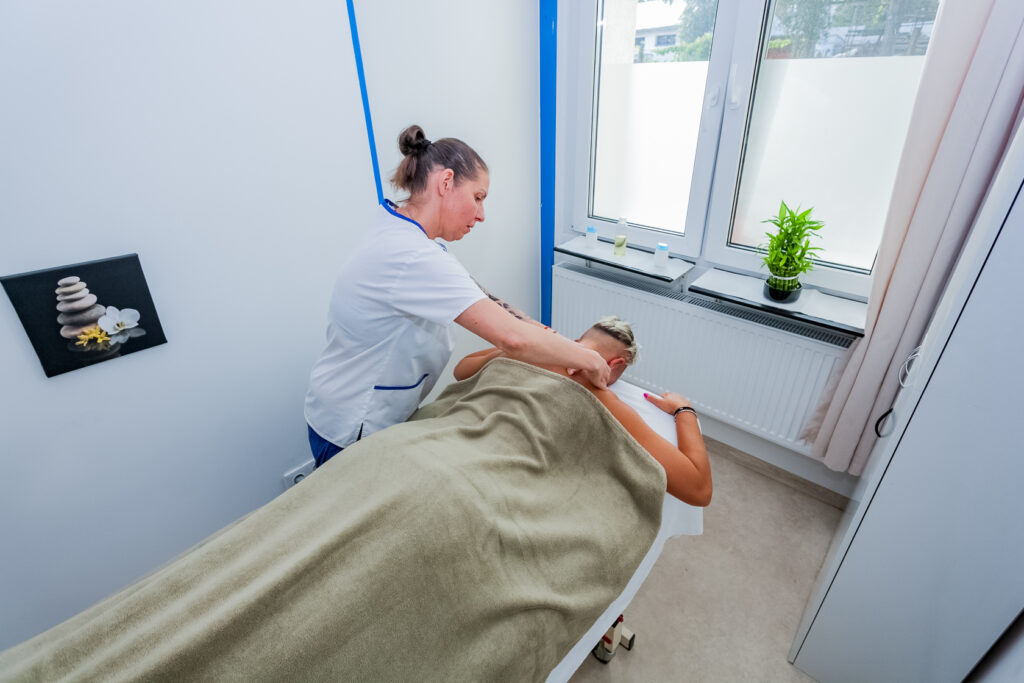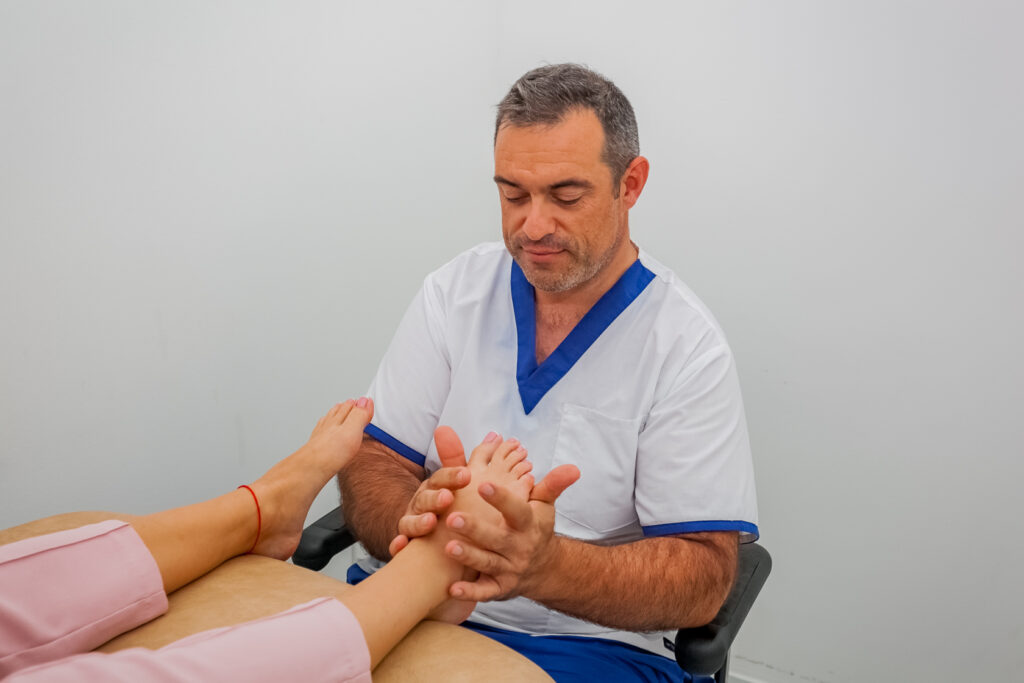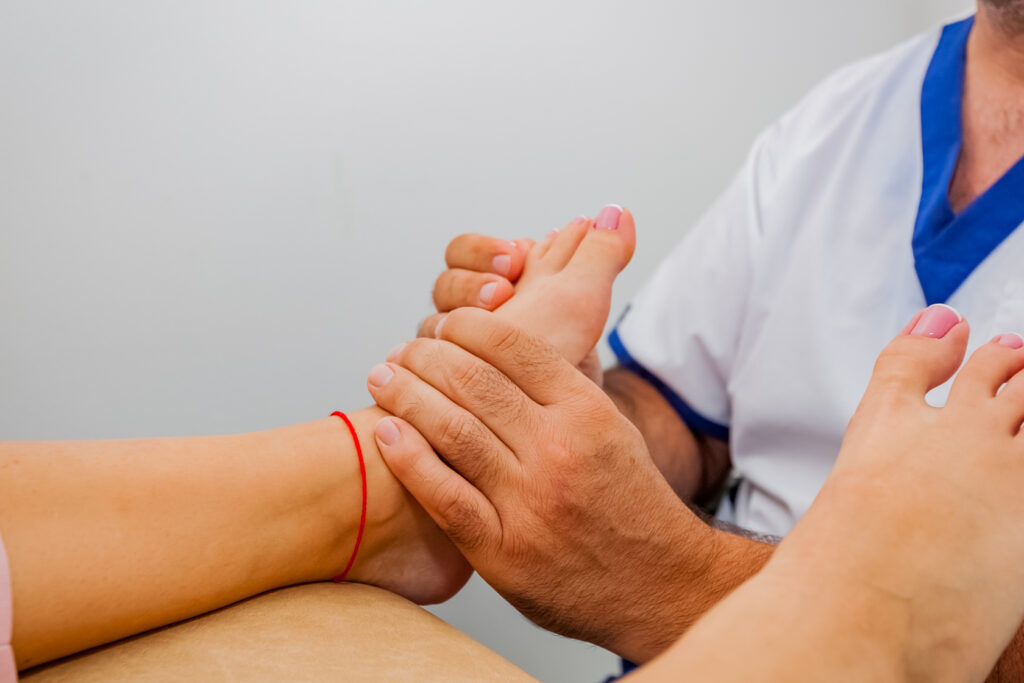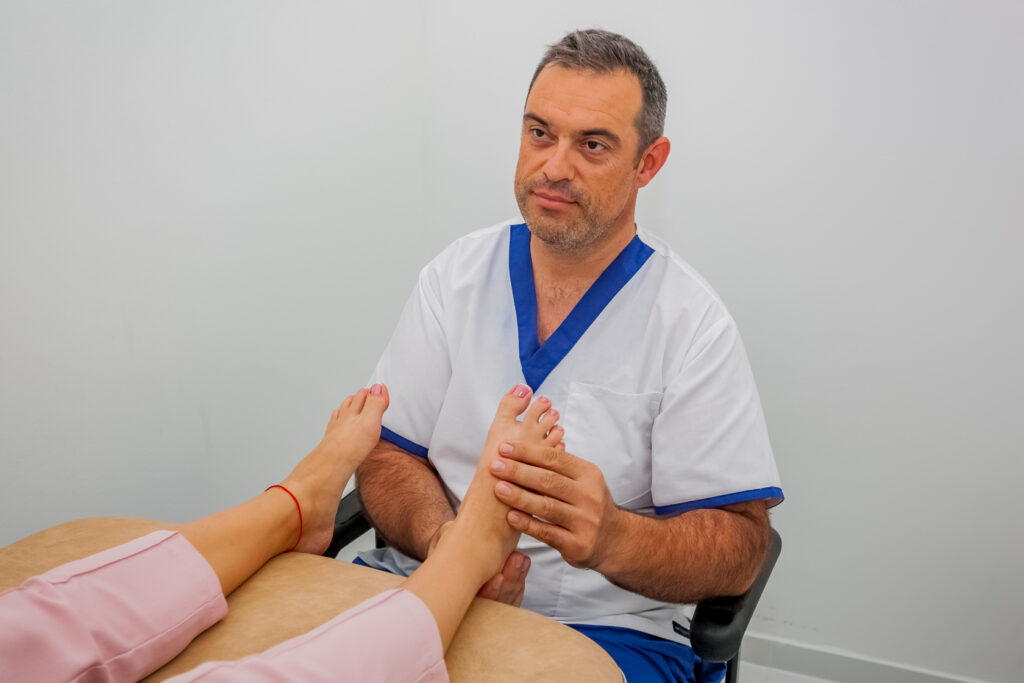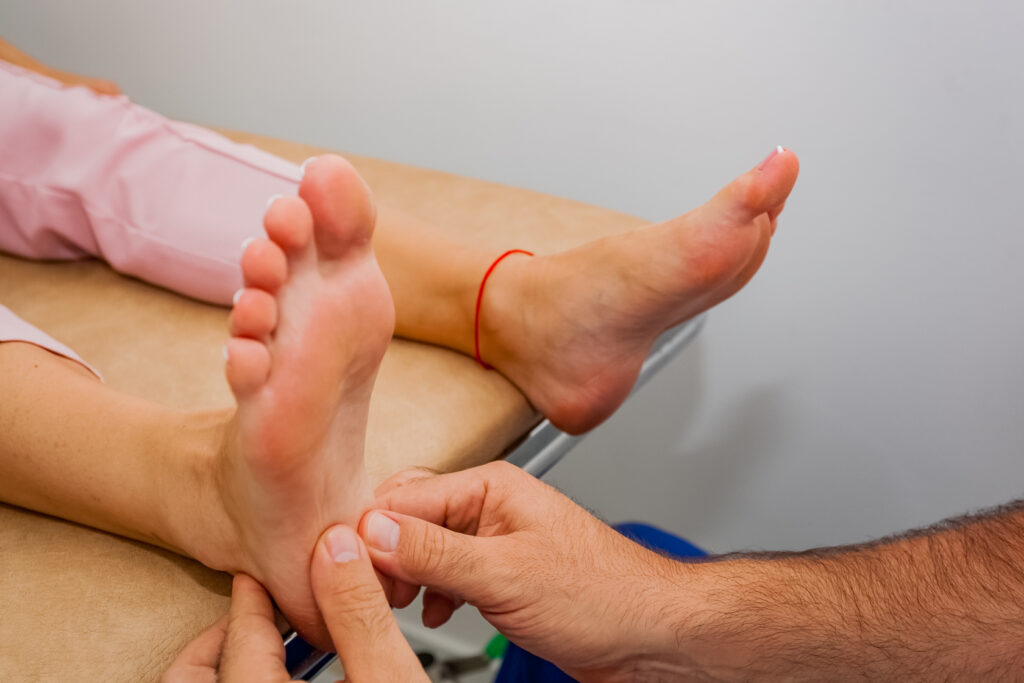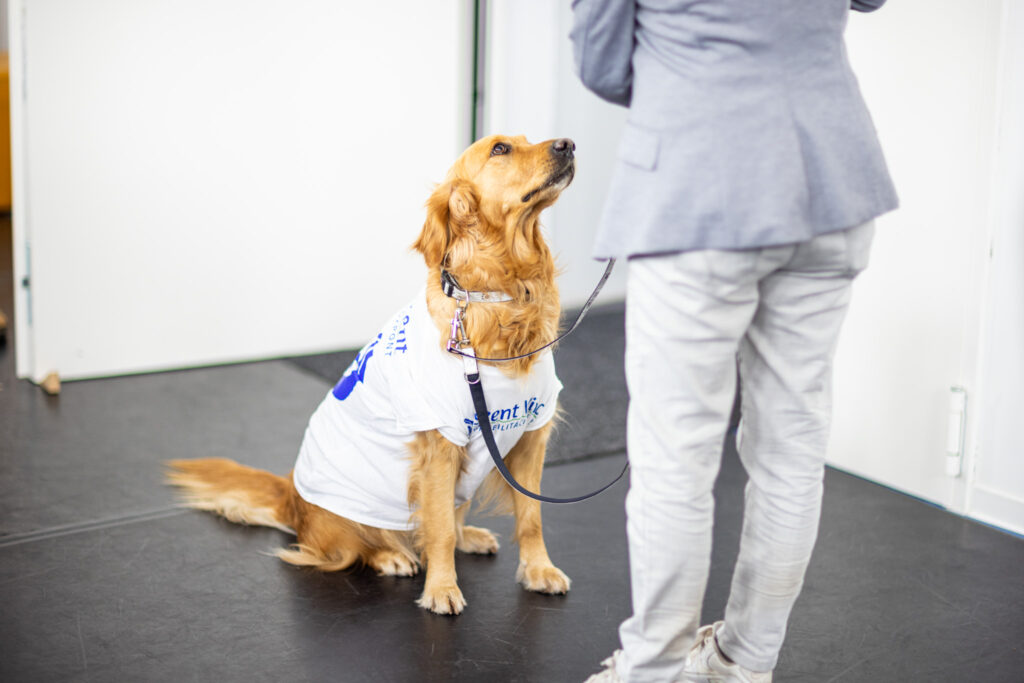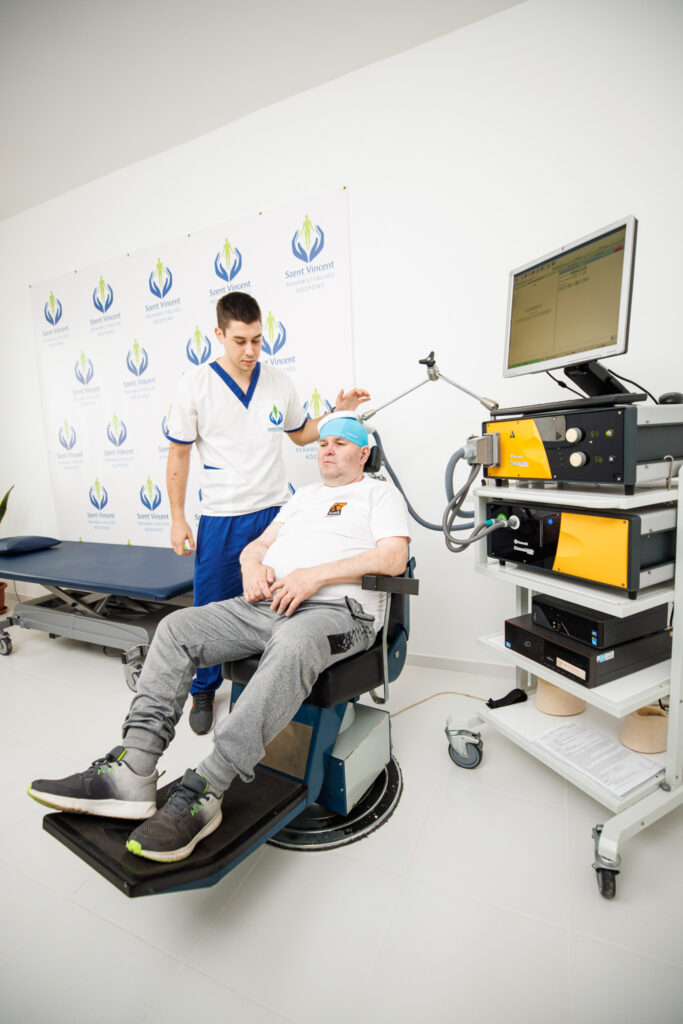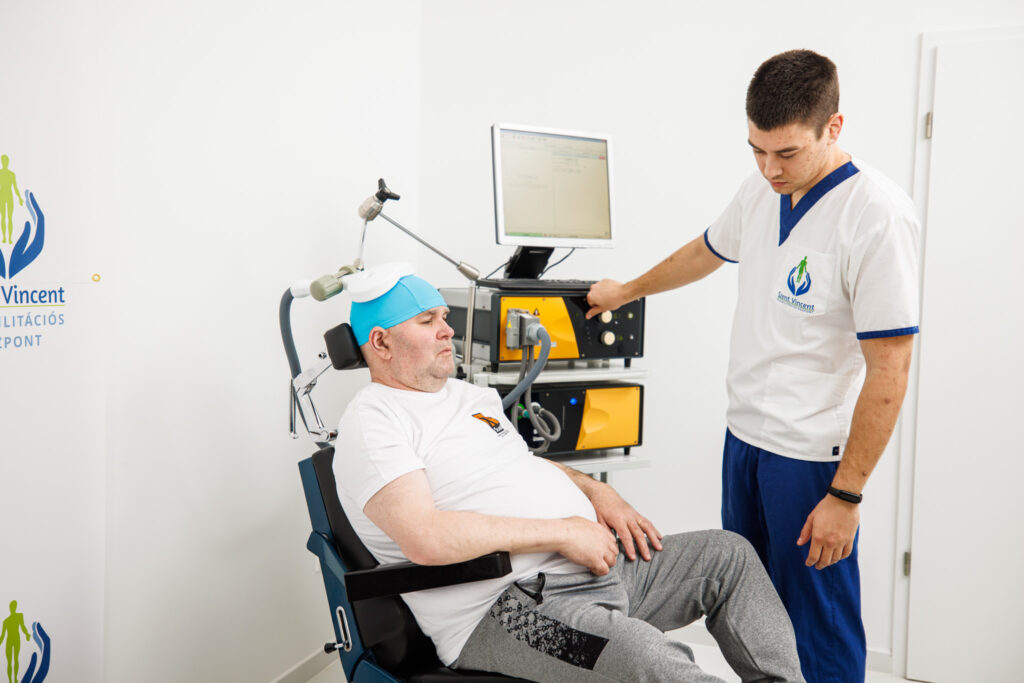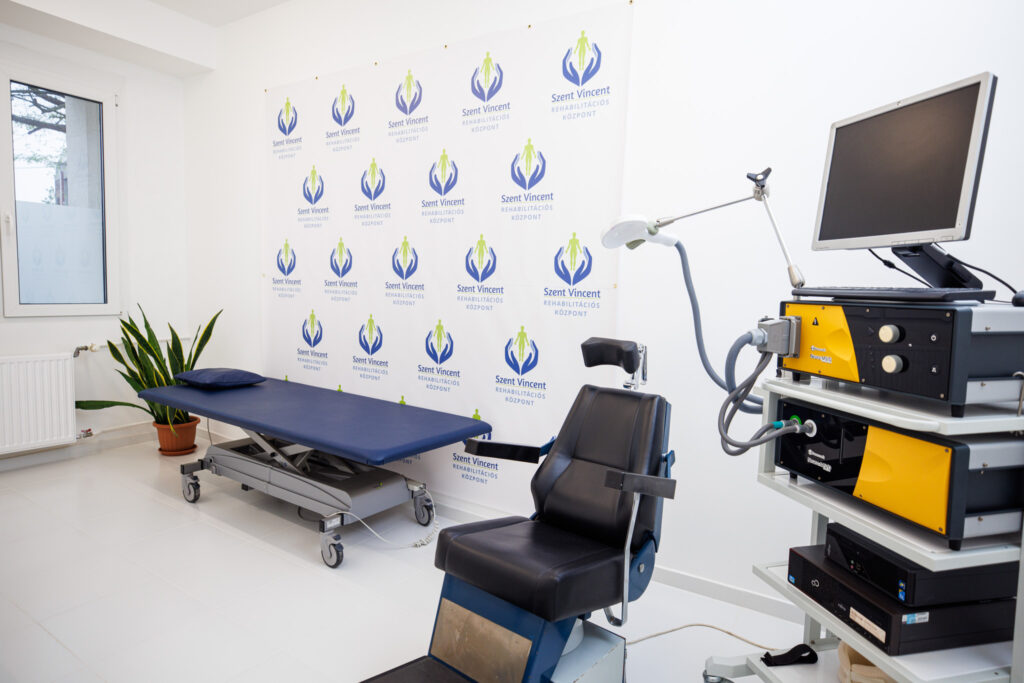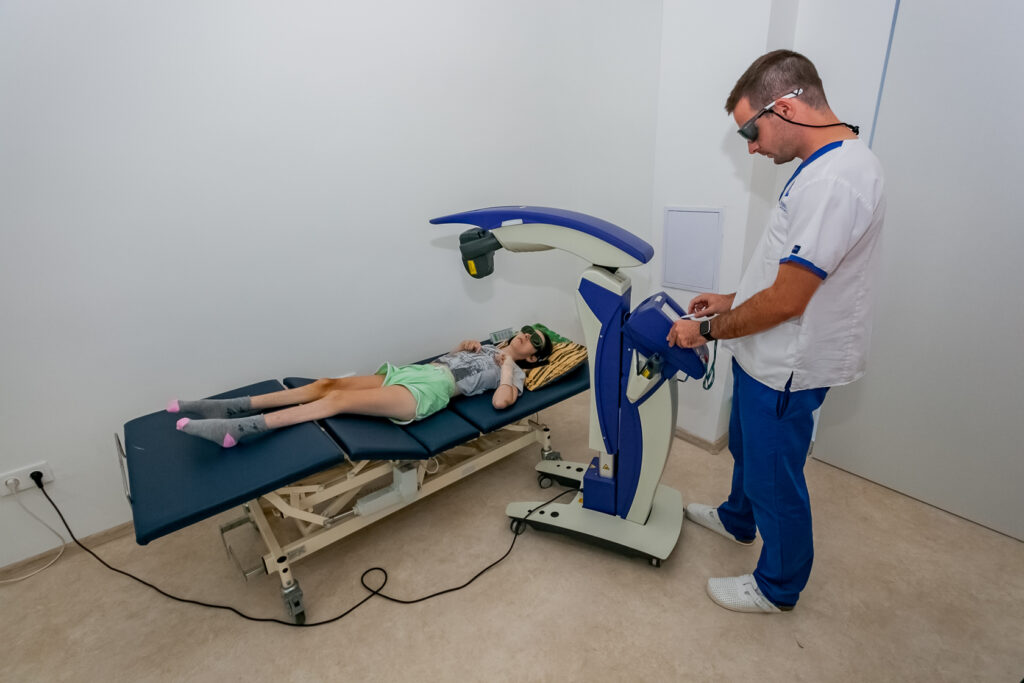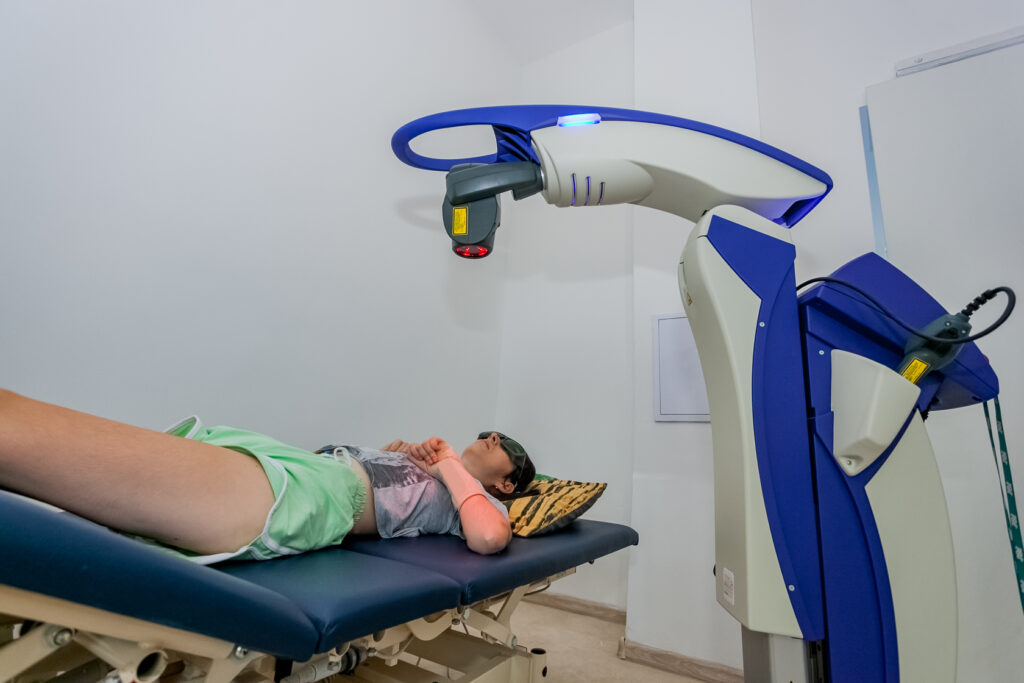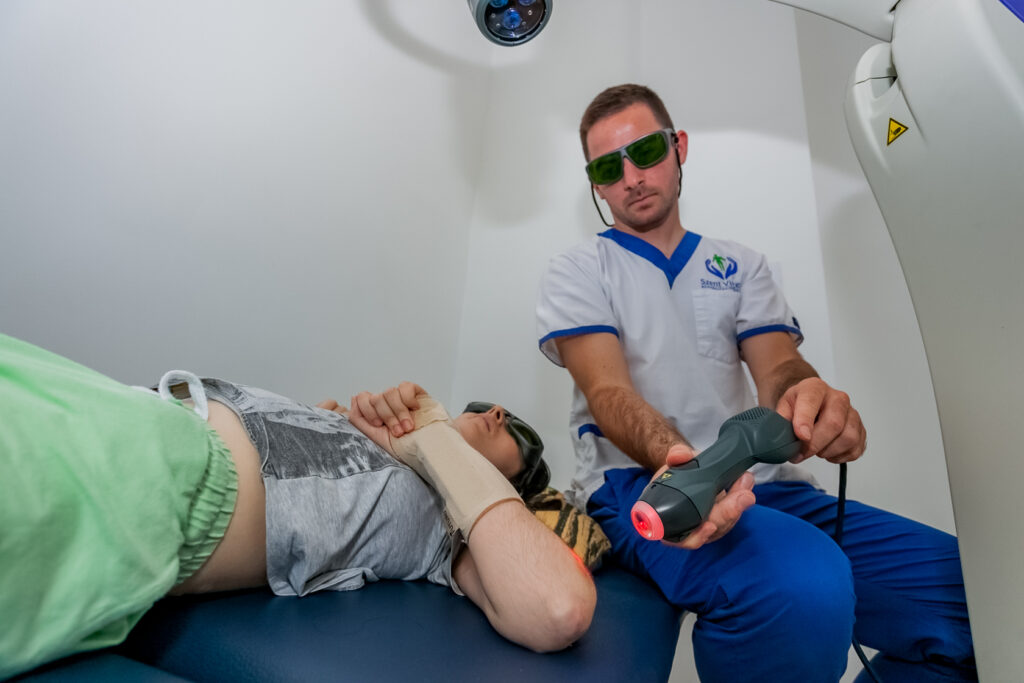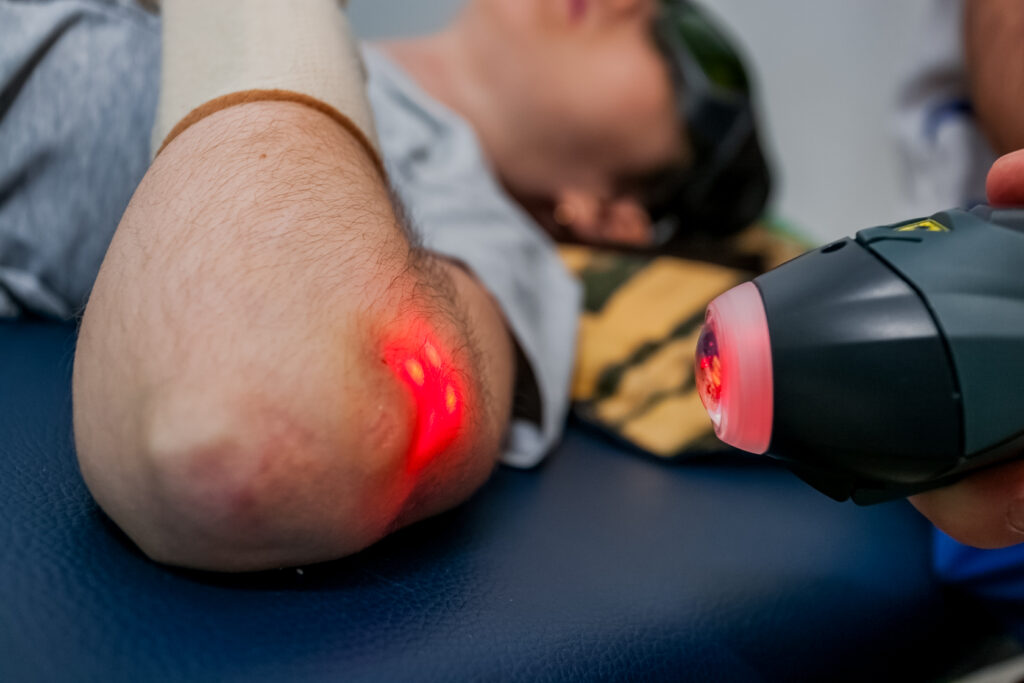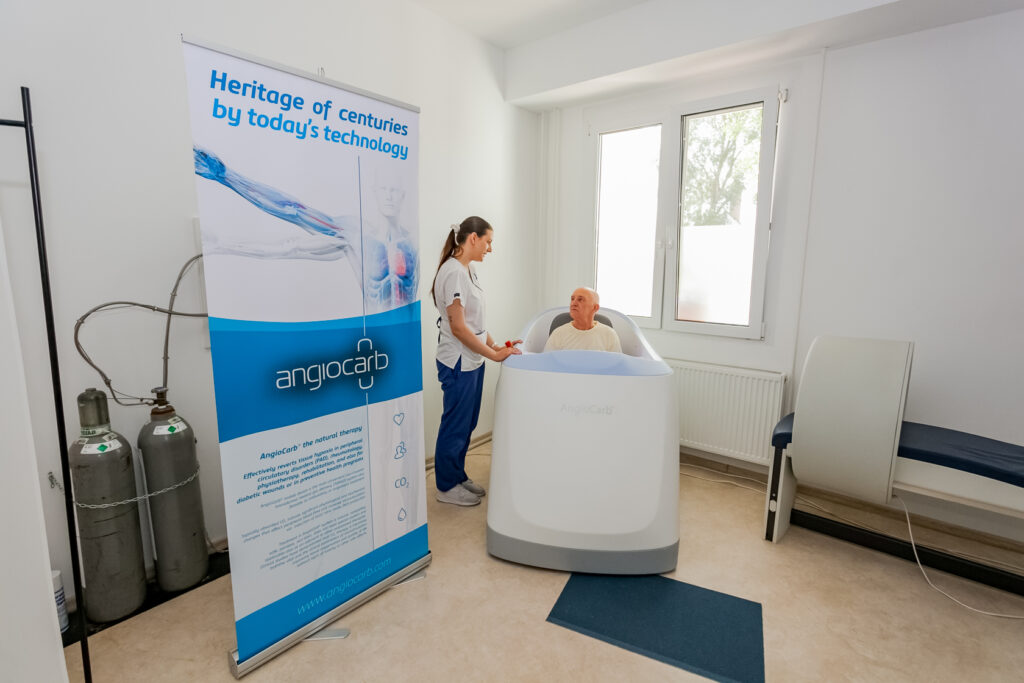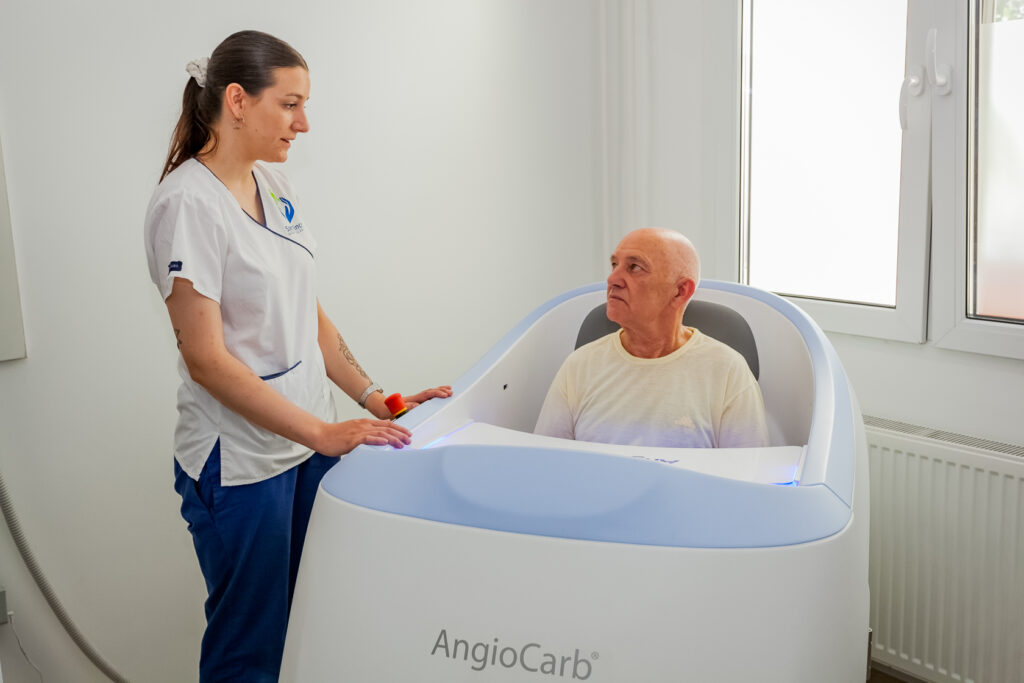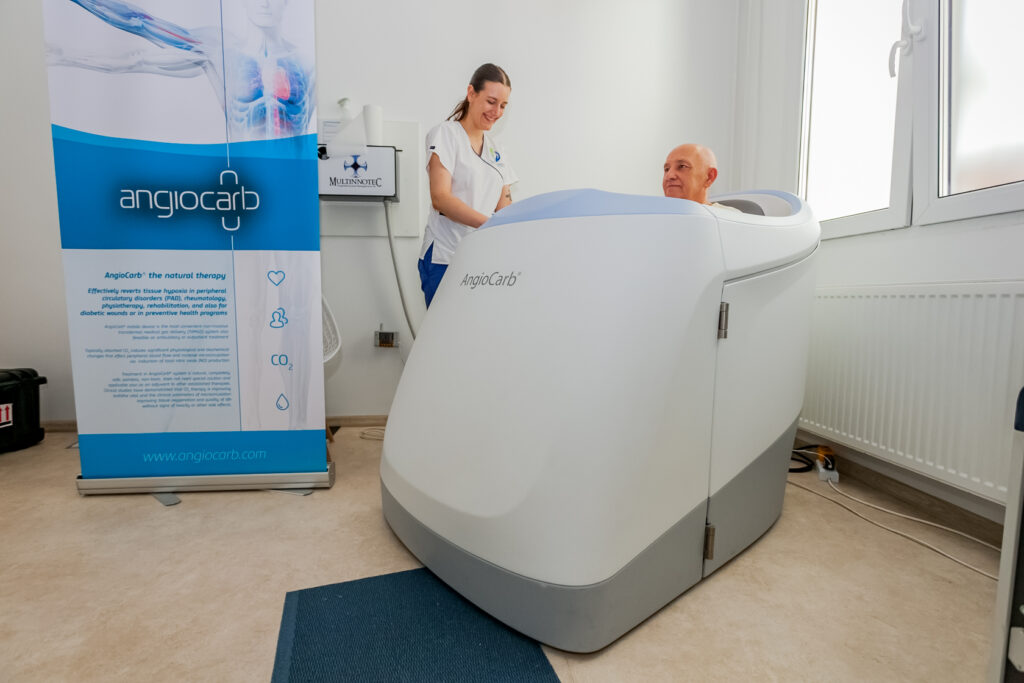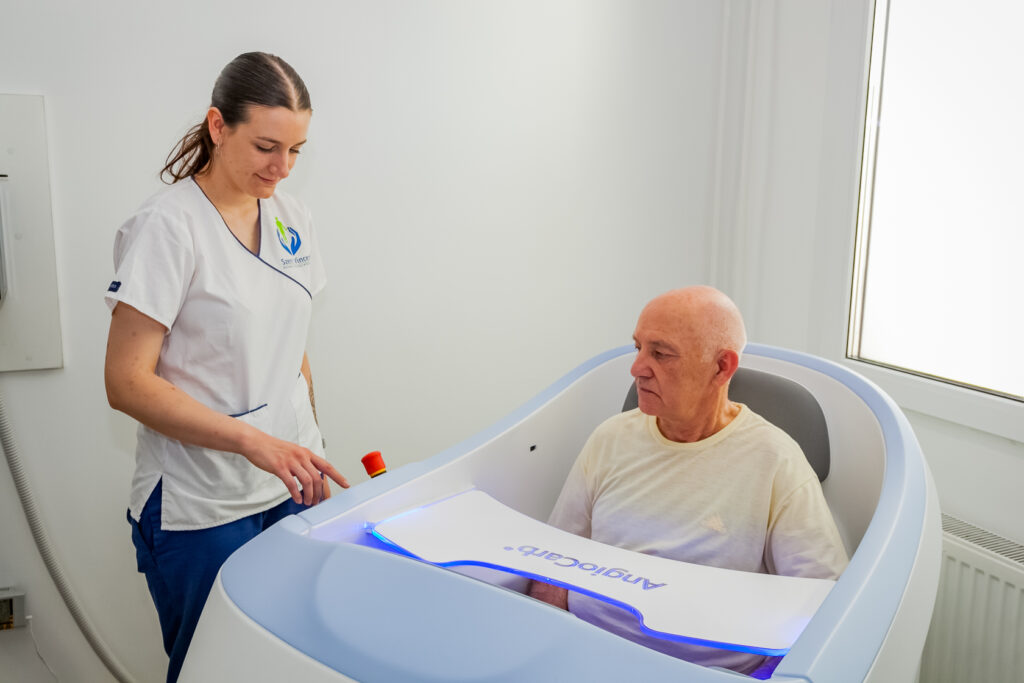Services
Neurology Consultations
What is neurology?
Neurology, also known as neurological medicine, is a medical specialty dealing with the nervous system, which includes the brain, spinal cord, nerves, and muscles.
Neurologists perform physical examinations and may order various diagnostic tests such as:
– CT (Computed Tomography): Uses X-rays to take pictures of the brain and spinal cord.
– MRI (Magnetic Resonance Imaging): Uses magnetic fields and radio waves to create pictures of the brain and spinal cord.
– EEG (Electroencephalography): Measures the electrical activity of the brain.
– EMG (Electromyography): Measures the electrical activity of muscles.
– Nerve conduction studies: Measure the speed of conduction of electrical impulses along nerves.
Neurologists diagnose based on physical exams and various imaging tests and may prescribe medication, physical therapy, surgery, or other therapies depending on the diagnosis.
The role of a neurologist
The neurologist (neurologist specialist) is responsible for investigating, diagnosing, and treating complaints arising from the nervous system.
If surgical intervention is needed, a neurosurgeon will also be involved in the therapy.
During consultations, we take a comprehensive approach to assess the patient’s neurological condition, and after diagnosis, we begin designing the rehabilitation program. We establish the foundations of rehabilitation goals and develop a rehabilitation plan including steps towards recovery.
Who can benefit from seeing a neurologist?
- Treatment of post-stroke conditions
- Parkinson’s disease and Parkinsonian syndromes
- Multiple Sclerosis
- Guillain-Barré syndrome
We are also prepared for the rehabilitation of complex brain and skull injuries, as well as treating other neurodegenerative and peripheral nervous disorders.
When should you see a neurologist?
Many symptoms may indicate neurological problems, and it’s worth consulting a specialist (neurologist). Here are some examples:
- Movement disorders: tremors, stiffness, slowed movements, weakness, balance problems, coordination disorders, difficulty walking, paralysis, convulsions
- Sensory disorders: deterioration of vision, blurred or double vision, hearing loss, tinnitus, dizziness, loss of balance, numbness, tingling, pain
- Cognitive disorders: memory problems, concentration difficulties, speech disorders, frequent forgetfulness, confusion, dementia
- Headaches: strong, recurrent headaches, migraines, cluster headaches, tension headaches
- Sleep disorders: insomnia, sleep apnea, narcolepsy
- Other symptoms: loss of consciousness, fainting, dizziness, fatigue, incontinence, mood disorders, depression, anxiety
If you experience any neurological symptoms, it is important to consult a neurologist as soon as possible. Early diagnosis and treatment can improve recovery chances and prevent further complications.
What diseases does a neurologist treat?
Here are some examples of common neurological disorders that a neurologist may treat:
– Headaches and migraines: Pain in any part of the head, which can vary in intensity and may have various causes. Common types include tension headaches, migraines, and cluster headaches.
– Cerebrovascular disorders: Conditions where the brain’s blood supply is impaired. This includes transient ischemic attacks (TIA), ischemic and hemorrhagic strokes, aneurysms, and other vascular malformations.
– Epilepsy: A neurological disorder characterized by sudden, recurrent discharges of electrical activity in the brain, manifesting as seizures.
– Parkinson’s disease: A progressive neurodegenerative disorder that causes movement problems.
– Neuromuscular diseases: Disorders that affect the function of the nervous system and muscles. These can be due to genetic, autoimmune, or nervous system problems. Examples include multiple sclerosis (MS), amyotrophic lateral sclerosis (ALS), Guillain-Barré syndrome (GBS), spinal muscular atrophy (SMA), Duchenne muscular dystrophy (DMD), myasthenia gravis.
– Alzheimer’s disease and other dementias: Neurodegenerative diseases associated with a decline in cognitive abilities.
– Cerebral palsy (CP): Usually occurs during fetal development or early childhood due to damage to the areas of the brain responsible for movement and muscle control.
– Neuropathies: Damage or dysfunction of nerves. This can involve sensory, motor, or autonomic (involuntary, subconscious nervous system) components. There are many types of neuropathy, arising from various causes.
– Other movement disorders:
- Tremors (tremor)
- Muscle twitching (fasciculation)
- Tics
- Involuntary movements (dystonia)
- Ataxia
Conductive development
What is Conductive development?
Conductive development (also called conductive education) is a complex educational and therapeutic method mainly used for children and adults with motor and learning difficulties.
Key points:
-
Developed by Hungarian doctor-pedagogue András Pető in the 1940s.
-
Its aim is to help people with central nervous system injuries or developmental disorders (e.g., cerebral palsy, coordination problems, post-stroke conditions) to develop coordinated movement and learning skills.
-
It is not just physiotherapy: it combines pedagogy, motor development, cognitive, and social elements.
Main features:
-
Complexity: simultaneously develops movement, speech, thinking, and independence.
-
Active participation: the child or adult actively engages in tasks rather than being passive.
-
Group activities: participants support each other, which is motivating and socially beneficial.
-
Led by a conductor: a specialist trained in conductive education.
-
Integrated into daily life: skills are practiced in everyday activities such as dressing, walking, and eating.
Who can benefit:
-
Children with cerebral palsy.
-
Adults recovering from stroke or traumatic brain injury.
-
People with other motor development or learning difficulties.
Visualtherapy and typhlopedagogy
What is Visualtherapy ?
Visual therapy (or vision training) is a targeted developmental method aimed at improving visual functions and perception.
Key points:
-
Exercises and tools help eye coordination, visual acuity, eye movements, and spatial orientation.
-
It is pedagogical and neuropsychological, not purely medical.
-
Especially important for children with visual perception problems affecting reading and writing.
Main features:
-
Functional development: improves hand-eye coordination, attention, and memory.
-
Complex exercises: eye tracking, focus switching, contrast sensitivity.
-
Use of tools: mirrors, light sources, colored boards, specialized software.
-
Playful methods: especially for preschool and school-age children.
-
Complementary to ophthalmology: supports conditions like amblyopia, strabismus, or hidden vision coordination problems.
Who can benefit:
-
Children with reading/writing difficulties linked to visual processing.
-
Visually impaired or eye-muscle disorder patients.
-
Adults recovering from stroke or brain injury.
What is Typhlopedagogy?
Tiflopedagogy provides comprehensive development and education for visually impaired individuals, promoting independence, communication, and learning.
Key points:
-
From Greek typhlos (“blind”).
-
Aims to help visually impaired individuals lead as independent and full lives as possible.
-
Focuses on alternative sensory development (hearing, touch, smell) and orientation skills.
Main features:
-
Functional vision assessment and development: using remaining vision.
-
Independence training: mobility, white cane, daily living skills.
-
Special materials and tools: Braille, tactile maps, magnifiers, screen readers.
-
Early intervention: supports multisensory coordination from infancy.
-
Social and psychological support: confidence, communication, social integration.
Who can benefit:
-
Blind or visually impaired children needing specialized development.
-
Adults who lose vision due to injury or illness.
-
Parents and teachers seeking guidance on supporting visually impaired learners.
Special education
What is Special education?
Special education pedagogy focuses on the education, development, and social integration of individuals with special educational needs (SEN).
Key points:
-
Complex approach: develops learning, motor, communication, and social skills.
-
Individualized and group programs: tailored to each learner’s needs.
-
Interdisciplinary cooperation: works with doctors, psychologists, speech therapists, physiotherapists, and conductors.
-
Lifelong support: aids rehabilitation and workforce integration in adulthood.
Main areas:
-
Tiflopedagogy: for visually impaired.
-
Surdopedagogy: for hearing impaired.
-
Speech therapy: for speech and language disorders.
-
Intellectual disability pedagogy: cognitive and self-care skills development.
-
Motor education: for children with movement difficulties.
-
Autism spectrum pedagogy: social, communication, and independence skills.
Who benefits:
-
Those with sensory, motor, intellectual, or communication difficulties needing specialized support.
Musculoskeletal Rehabilitation Consultation
This medical consultation addresses patients’ musculoskeletal issues stemming from damage or dysfunction of bones, muscles, joints, or other musculoskeletal structures. These issues may include sports injuries, arthritis, spinal problems, post-surgical rehabilitation, or chronic pain conditions.
Psychiatry Consultation
This private practice offers non-National Health Insurance Fund supported outpatient psychiatric and psychiatric rehabilitation care in Hungarian, and upon request, in English, French, and Romanian.
The initial problem-centered examination and care take at least 45-55 minutes per session. Patients arrive by appointment. The first session involves understanding the patient’s complaints, symptoms, changes in quality of life, and medical history to diagnose and plan further treatment based on expectations and needs.
Exploratory psychological diagnostics and, if necessary, heteroanamnesis are also conducted. Treatment may include medication (prescription writing) according to diagnostic criteria and professional guidelines, supplemented by psychotherapeutic methods, including supportive therapy with cognitive-behavioral elements, following the spirit of humanistic psychiatry. Treatment is always personalized, and due to the nature of mental illnesses, therapy typically requires multiple sessions, with frequency determined by the diagnosis, problem, and patient’s expectations aligned with common goals.
Neurosurgery Consultation
Neurosurgery is a branch of medicine dealing with the diagnosis and treatment of disorders related to the nervous system, particularly those requiring surgical intervention. Conditions treated by neurosurgeons include brain tumors, spinal cord injuries, brain and spinal tumors, neuralgia, nerve root compression (e.g., herniated discs, radiating pain), lumbago, and other neurological disorders.
Physiotherapy - Physical Therapy
What is physical therapy? What role does it play in complex rehabilitation therapy?
Physical therapy is a fundamental part of rehabilitation aimed at preventing, rehabilitating, and treating musculoskeletal disorders. Treatments are based on medical diagnosis or recommendation, with goals set collaboratively with doctors, patients, and their immediate environment. Family members are also provided with instructions to support the patient’s recovery and the rehabilitation team’s efforts.
Goals of Physical Therapy:
- Restore function to affected organs, systems, or body parts
- Reduce pain
- Decrease or eliminate mobility restrictions
- Improve or develop muscle strength
- Overcome muscle imbalance
- Correct improper movement patterns, such as limping
- Enhance cardiovascular function
- Teach proper breathing techniques
When is physical therapy important?
- Post-Injury Rehabilitation: Helps with rehabilitation after injuries such as muscle tears, dislocations, fractures, or surgeries. Proper exercises and therapy can restore muscle strength, joint mobility, and functional movements.
- Chronic Pain Management: For conditions like chronic back pain, arthritis, or fibromyalgia, physical therapy can help reduce pain and improve quality of life. Special exercises and therapeutic methods strengthen affected muscle groups and improve posture.
- Neurological Conditions: Physical therapy plays an important role in treating neurological conditions like stroke, Parkinson’s disease, or spinal cord injuries. Therapeutic methods can improve balance, coordination, and overall mobility.
- Sports Performance and Prevention: Physical therapy is not only vital for rehabilitation after injuries but also helps athletes enhance performance and prevent injuries. Special strengthening and stretching exercises optimize muscle strength, flexibility, and joint stability.
The importance of physical therapy at different ages
Physiotherapy plays an important role in the preservation of health and the prevention and treatment of musculoskeletal problems at all ages, however, the therapy focuses on different goals and tools at each age:
In the case of infants and small children:
Physiotherapy can help babies and toddlers develop their movement, improve their muscle tone and correct coordination disorders. Physiotherapists use special games and exercises that are both fun and developmental for children.
For school-age children:
It can help children develop correct posture, prevent scoliosis and rehabilitate sports injuries. Physiotherapists can advise children to increase their physical activity and reduce sitting time.
For adults:
It can help adults treat back pain, neck pain, joint pain and sports injuries. Physiotherapists put together an individual program for adults that matches their goals and physical condition.
For the elderly:
It can help seniors improve their balance, maintain mobility and prevent falls. Physiotherapists use special exercises for the elderly to help develop muscle strength and coordination.
Physiotherapy can help not only in the treatment of locomotor problems, but also in improving the general state of health. It can improve well-being and sleep quality, as well as reduce stress.
What is physiotherapy good for and when can it be used?
Physiotherapy is a widely used and safe method that can help with many health problems and injury prevention. Its main goal is to regain mobility, improve the quality of life, increase load capacity and endurance, and restore the functions necessary for everyday life and make them more active. This healing procedure aims to restore, improve or maintain locomotor functions. It is used in many areas, including:
Locomotor injuries: sports injuries, injuries, rehabilitation after surgery
Chronic diseases: arthritis, rheumatic diseases, osteoporosis
Neurological problems: Parkinson’s disease, stroke, multiple sclerosis, neuropathies
Other problems: pain, balance disorders, incontinence, scoliosis
Physiotherapists use various techniques during physiotherapy, including hanging grid therapy, mobilization and stretching, strengthening, manual therapy, and physical therapy treatments (e.g. electrotherapy, ultrasound treatment, laser treatment, magnetic therapy).
When can physiotherapy be used?
Every case, every patient is different, the method and time of treatment must be decided individually by specialists and physiotherapists. Physiotherapy methods are generally effective in the case of pain resulting from most musculoskeletal diseases (back pain, lower back pain, or neck pain resulting from some form of deformity, injury, wear, or inflammation).
Physiotherapy can also be used for neurological, orthopedic, traumatological and rheumatological complaints.
Types of Physical Therapy
Passive Techniques
Important for maintaining joint range of motion, preventing contractures, enhancing blood circulation, boosting cartilage metabolism, alleviating pain, and preserving proprioception.
- Appropriate positioning
- Passive mobilization
- Various soft tissue techniques
- Therapeutic massage
Active Techniques
Enable strengthening of muscles – gradually increasing joint range of motion, enhancing circulation, developing proprioception and coordination.
Transfer Techniques
Include methods primarily for changing positions such as sitting up, transferring, and teaching walking. Physical therapists also train patients in the use of primarily mobility-enhancing assistive devices.
What is suspension grid physical therapy and when is it applicable?
Suspension grid is a tool used in physical therapy and is highly effective during rehabilitation treatments. Like hydrotherapy, it allows working with the limbs and the torso in a weight-relieved position.
During suspension grid therapies, various belts and ropes are used to achieve this weight-relieved position, which allows for positioning, mobilizing, and strengthening the affected body part. Suspension grid therapy is particularly significant in the rehabilitation of neurological patients, as unloading is crucial for initiating movement in paralyzed limbs. However, the suspension grid is not only essential in neurorehabilitation but also effectively used in trauma, rheumatology, orthopedics, and even for athletes. It can also achieve positive changes in chronic pain conditions (back pain, neck pain, lower back pain, arthritis) and other issues (spinal curvature, herniated discs, balance disorders, coordination disorders).
Its effectiveness lies in the ability to perform trunk and limb movements even in a weight-relieved position.
Using belts, ropes, and the grid system, weakened muscles can be strengthened.
For paralyzed limbs, the affected body part’s mobilization and positioning can be achieved more easily and effectively.
Who is it recommended for?
Suspension grid treatment can be recommended for many people; here are a few examples:
- Those recovering from injuries or surgery: It can aid in unloading, improving range of motion, and increasing muscle strength during rehabilitation.
- Those suffering from chronic pain: It can effectively alleviate back pain, neck pain, lower back pain, and pain caused by arthritis.
- Those with balance issues: It can improve balance and coordination, thus reducing the risk of falls.
- Those looking to improve their posture: It strengthens back and core muscles, improving posture.
- Those looking to relieve stress: It has a relaxing effect, helping to reduce stress.
- Athletes: It can help athletes improve their performance by increasing muscle strength, flexibility, and balance.
Suspension grid therapy is a method applicable to virtually anyone, but in certain cases, our specialists proceed with greater caution or may limit its use, e.g., joint instability, restricted joint mobility, significantly increased or decreased muscle tone, or severely mobility-restricted patients.
Robot Therapy
Tyromotion® robots are robot-assisted devices that prove to be modern and effective supplementary therapies widely used in neurorehabilitation today.
Robot-assisted therapy has several advantages:
– Movements are more precise and easier to repeat as the robot can precisely guide the patients.
– Exercises can be performed in a higher repetition number than during traditional therapy.
– The robot provides immediate and accurate feedback on the patient’s performance.
– The playful and interactive nature of robot-assisted therapy motivates patients, helping them to be more persistent during therapy.
Our center offers several products from the Tyromotion® robot-assisted product family:
- DIEGO®
- PABLO®
- TYMO®
- DIEGO®
DIEGO®
DIEGO® is Tyromotion’s unique robotic therapy device for upper limb rehabilitation. It compensates for gravity adequately according to the patient’s condition. The robotic system and virtual reality aid the treatment, allowing the patient to quickly and easily regain motor function of their arms. The system can be used individually or simultaneously for both upper limbs.
Key Features:
– Robotic and sensor-based rehabilitation device
– Robotic anti-gravity support for the arms
– Single and bilateral therapy in one device
– Assisted and interactive therapies for the entire arm
– Suitable for adults and children at all phases of rehabilitation
– The system includes functional exercises in 1-, 2-, and 3-dimensional spaces
– The device can provide immediate feedback on the patient’s performance
PABLO®
PABLO® is a robotic system for arm and hand rehabilitation equipped with evaluation functions. PABLO offers a wide range of therapeutic possibilities for children and adults with musculoskeletal disorders resulting from orthopedic and neurological damage to the upper limbs.
Key Features
– Robotic and sensor-based rehabilitation device
– Wireless therapy device
– Suitable for adults and children at all phases of rehabilitation
– The device can provide immediate feedback on the patient’s performance
– PABLO® Multiboard: allows treatment of severely damaged patients to learn to avoid compensation during movements
– PABLO® Multiball: aids in restoring forearm pronation and supination, as well as wrist flexion and extension
TYMO®
TYMO® is a balance-enhancing device equipped with sensors. The system connects to a screen and offers virtual reality games that adapt to the patient’s functional capacity. The therapist decides based on the recommended games which dimension (antero-posterior or medio-lateral) or two dimensions (combining antero-posterior and medio-lateral movements) to work in. An unstable surface, such as a sponge or tilting board, can be placed under the interface to complicate the tasks. TYMO® allows patients to perform various movements in a sitting or standing position, such as weight shifting or stationary walking. The robot continuously provides feedback to the participants, facilitating movement development. During therapy, patients shift their weight through the TYMO® panel and control games running on the monitor (Maranesi et al., 2020).
Develops sitting and standing balance, postural control, and facilitates practicing two-handed support. TYMO® is a device capable of analyzing the transfer of the body’s center of mass; it also compares the symmetry of active weight distribution and provides a quantitative assessment of static postural control and balance (Mansfield et al., 2013; Ostrowska et al., 2022).
ReStore Soft Exo-Suit
The ReStore exoskeleton is a specialized device developed for the rehabilitation of hemiparetic patients. The exoskeleton, worn on the lower limb, assists movement. The ReStore exoskeleton primarily enhances the walking pattern by facilitating ankle and knee movements during walking, making the walking pattern more natural and energy-efficient. By facilitating these movements, not only can the walking pattern be improved, but indirectly, balance and limb loading can be developed, and the frequency of falls can be reduced.
Versatile
The device’s features and parameters can be varied in multiple ways, making the ReStore exoskeleton widely applicable among hemiparetic patients.
Data-driven
During therapy, the therapist can monitor and analyze the data in real time using an application and optimize joint movements.
How does ReStore work?
The exoskeleton is directed by sensors and cables powered by a battery. Sensors mounted on the lower limbs detect the walking phase of the respective limb, thus timely directing the movement of the paretic limb.
In addition to sensors, a cable runs on the anterior and posterior surfaces of the paretic limb. The contraction of the cable running on the posterior surface provides plantarflexion movement (ankle downward movement), while the cable on the anterior surface is responsible for dorsiflexion movement (ankle upward movement). The cables can be used in both taut and loose positions, thus allowing for a variety of exercise tasks.
Important
A comprehensive physiotherapeutic assessment and a consultation always precede the use of ReStore. The robot’s use requires the patient to meet several conditions.In cases where the patient meets all criteria and parameters, therapy can begin under the supervision of professionals.
ReWalk Personal 6.0 Robotic Exoskeleton
A personalized walking aid.
With the help of the Rewalk Personal 6.0 Exoskeleton and a special crutch, people living with lower limb paralysis as a result of an accident can become able to stand, walk, turn around, or even climb stairs. The ReWalk system provides the possibility of independent walking, however, it is not suitable for sports or vigorous exercise.
Important
In all cases, the use of ReWalk is preceded by a comprehensive physiotherapy assessment and consultation. In order to use the robot, a given patient must meet a number of conditions. If the patient meets all criteria and parameters, therapy can begin under the supervision of specialists.
- Adequate condition of the arms and shoulder muscles for crutch-supported walking
- Healthy bone density
- Intact skeleton (no fractures)
- Able to confidently stand using devices like the EasyStand
- Good general health condition
- Height: 160-190 cm; upper leg length: 43.5 cm-56 cm; lower leg: 36 cm-48.5 cm
- Weight not exceeding 100 kg
- Severe neurological history (beyond traumatic spinal injury): e.g., multiple sclerosis, cerebral palsy, amyotrophic lateral sclerosis, traumatic brain injury.
- Existing infectious diseases
- Presence of pressure ulcers
- Severe spasticity (Modified Ashworth 4)
- Unstable spine, unhealthy limbs or pelvic fracture
- Heterotopic ossification impairing joint mobility
- Significant contractures (ankle >0°, knee >10°, hip flexion >0°)
- Inadequate psychological or mental state that could lead to injury to the user or the device.
- Pregnancy
Myomo Robot Therapy
The Myopro is an EMG-controlled upper limb robotic orthosis developed jointly by Harvard Medical and MIT.
The system detects signals through forearm flexor and extensor EMG sensors, which after patient-specific parameterization (sensor sensitivity, signal amplification, threshold, and range of motion), allows patients to use it independently. The wrist pronation and supination, as well as flexion and extension, can be freely configured in mechanical mode by the user. The system is usable in clinical and home environments, and even outdoors.
The clinical environment version, MyoPro MARK, contains separate units for the right and left sides, which are freely configurable.
Psychology Consultation
What is psychology?
Psychology is the science that deals with human thinking, feelings, behavior, and motivations. Derived from the Greek words “psyche” (soul) and “logos” (science), its goal is to understand and explain human mental processes and behavior and use this knowledge to improve people’s mental health and quality of life.
Branches of psychology include:
- General Psychology: Studies basic mental processes such as consciousness, attention, memory, thinking, learning, and emotions.
- Developmental Psychology: Examines human development from conception to death, including physical, cognitive, social, and emotional growth.
- Personality Psychology: Studies individual differences in personality, thought, emotions, and behavior.
- Social Psychology: Examines how individuals’ thoughts, feelings, and behaviors are influenced by others.
- Clinical Psychology: Diagnoses and treats mental disorders.
- Cognitive Psychology: Studies thought processes, including memory, language use, problem-solving, and decision-making.
- Biological Psychology: Investigates the role of the brain and nervous system in thinking, emotions, and behavior.
- Neuropsychology: Studies the effects of brain injuries and abnormalities on mental functioning.
- Medical Psychology: Examines the role of psychological factors in physical diseases and healthcare.
Psychology uses scientific methods to study the human mind and behavior, including experiments, observations, interviews, and questionnaires.
Practical applications are extensive. Psychologists diagnose and treat mental disorders, provide counseling and therapy, engage in education and research, and assist in workplaces, sports, the legal system, and other areas.
Psychology is a dynamically evolving science continuously making new discoveries about the workings of the human mind and behavior.
When should you see a psychologist?
Consider consulting a psychologist if you face life situations or problems affecting your emotional, mental, or physical well-being. Here are some examples:
- Anxiety and depression
- Personality disorders
- Stress management issues
- Life changes: Such as divorce, bereavement, work or school issues causing adjustment difficulties.
- Relationship problems
- Self-esteem and self-worth issues
- Addictions and habits: Such as managing smoking, alcohol consumption, or other harmful habits.
- Mental health maintenance
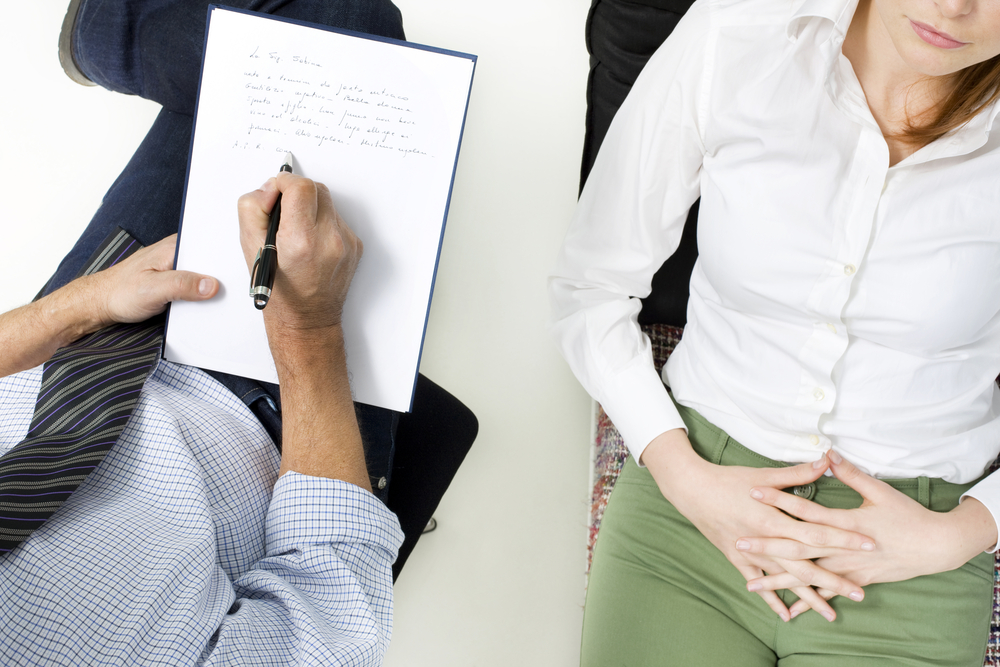
Speech Therapy
What is speech therapy?
Speech therapy diagnoses and treats disorders of speech, language, and communication. Speech therapists are professionals who help uncover the causes of these disorders and develop effective therapeutic programs.
Speech therapy covers several areas, including:
Speech Sounds: A speech therapist can help correct articulation errors, clarify speech sounds, and achieve more fluent speech.
Language: A speech therapist can assist with delays in language development, improve language comprehension, and expand vocabulary.
Communication: A speech therapist can help those with communication difficulties to communicate more effectively with others.
Speech therapy is available for all ages. For children, it can help with speech development delays, correct speech errors, and foster language development. For adults, it can help treat speech and language disorders caused by stroke, brain injury, dementia, or other neurological diseases. Speech therapy also assists after vocal cord nodules removal, in cases of stuttering, swallowing difficulties, autism spectrum disorders, and other communication disorders.
Speech therapy treatment is personalized and depends on the patient’s individual needs. Speech therapists may use various therapeutic techniques, including exercises, games, and technological tools.
Speech therapy can be effective in treating speech, language, and communication disorders. It can help patients improve their communication skills, become more confident, and achieve a better quality of life.
Nutritional Therapy
Nutritional Therapy
Why is nutritional therapy essential in rehabilitation?
Proper nutrition is vital for the body’s healing processes. For effective regeneration, cells require optimal nutrient supply to support the rebuilding of damaged tissues, strengthen the immune system, and maintain internal balance. During rehabilitation, the body is under increased stress, making dietary interventions crucial for optimizing energy levels, reducing inflammation, maintaining hormonal balance, and supporting mental health.
Key Therapeutic Areas
Post-Stroke Recovery
Supporting the central nervous system with dietary strategies that enhance neuronal function and improve circulatory efficiency. Stimulating cerebral blood flow, improving cognitive functions, and restoring muscle function are all critical in post-stroke rehabilitation.
Musculoskeletal Rehabilitation
Nutritional interventions that promote the regeneration of damaged or weakened muscles, joints, and bones are essential for restoring physical activity. Strengthening muscle tissue, maintaining connective tissue flexibility, and regaining mobility are central components of rehabilitation.
Improving Mental Wellbeing
Mental health and emotional stability are closely linked to nutrition and the nervous system. A well-designed diet can support neurotransmitter function, aid in stress management, and help reduce mood fluctuations.
Digestive System Regeneration
Gut health plays a fundamental role in overall wellness and recovery. Appropriate nutritional approaches enhance digestive efficiency, protect the intestinal barrier, and support the body’s detoxification functions.
Reducing Chronic Pain
Rehabilitation often involves prolonged pain, which can be alleviated through targeted dietary strategies. To improve quality of life, nutrition-based approaches can help reduce pain-related processes and accelerate recovery.
Supporting Cardiovascular Health
Optimal functioning of the circulatory system depends on adequate nutrient intake and maintaining vascular elasticity. A healthy diet aids in regulating blood pressure, preserving circulatory balance, and lowering the risk of cardiovascular complications.
Strengthening the Immune System
During rehabilitation, supporting immune function is particularly important, as recovery demands enhanced defense mechanisms. An optimal diet contributes to infection prevention, cellular regeneration, and the maintenance of immune responses.
Maintaining Hormonal Balance
Hormonal imbalances can negatively affect both regeneration and well-being. Proper dietary interventions can support hormone production, metabolism, and the body’s adaptability during the rehabilitation period.
Restoring Metabolic Balance
Optimizing metabolic function is crucial during healing. Personalized nutritional strategies help regulate energy balance, maintain a healthy body weight, and support regenerative processes.
Reducing Chronic Fatigue and Exhaustion
Extended recovery periods may deplete the body’s energy reserves, slowing down healing. Appropriate dietary strategies help sustain energy levels, enhance physical and mental performance, and shorten recovery time.
Conclusion
Personalized nutritional therapy contributes to faster recovery, reduces the risk of complications, and supports improvements in the patient’s quality of life.
Dietetics
In harmony with health and nutrition: Discover the science of dietetics at the Szent Vincent Rehabilitation Center.
What do our dialecticians deal with?
Dietetics is the science and practice of healthy eating. Dietitians provide diets and nutritional advice based on an analysis of people’s nutritional needs and lifestyle factors such as diseases or special needs.
Dietitians’ responsibilities include individualized diet planning, developing special diets to treat or prevent health problems and diseases, and promoting and educating healthy eating habits. Dietitians often work with other health professionals, such as doctors, nutritionists, and psychologists, to provide comprehensive support to patients in developing and maintaining a healthy lifestyle.

Occupational Therapy
What is occupational therapy?
Occupational therapy is a rehabilitation profession that aims to improve functional independence and quality of life for the sick, injured and disabled. By using occupations and activities for therapeutic purposes, occupational therapists help patients regain their lost abilities, learn new skills, and adapt to changing circumstances.
Occupational therapy can be used in a variety of areas, including:
- Physical rehabilitation: In case of injuries, surgeries, stroke, chronic pain
- Psychiatric rehabilitation: In case of depression, anxiety, psychotic disorders, dementia
- Child rehabilitation: In case of developmental disorders, learning difficulties, autism spectrum disorder
- Geriatric rehabilitation: In case of age-related mobility impairment or dementia
- Workplace rehabilitation: In the event of a work accident or chronic illness
Occupational therapy is individualized and depends on the individual needs and goals of the patient. When developing the therapy plan, the occupational therapist takes into account the patient’s physical, cognitive, psychological and social condition, as well as the environment.
The activities used in occupational therapy range widely and may include:
- Everyday activities: Dressing, eating, bathing, housework
- Workplace activities: Computer use, writing, tasks requiring dexterity
- Leisure activities: Cooking, painting, sports, listening to music
- Creative activities: Drawing, beading, origami
- Cognitive training: Memory exercises, attention concentration training, problem-solving
- Occupational therapy can be effective in improving functional independence and quality of life. Ergotherapy treatment can help patients:
- To regain their lost abilities
- Learn new skills
- Adapt to changing circumstances
- Increase their self-confidence
- Become more independent
- Improve their social relationships
- Live a fuller life
Who can ergotherapy help?
Occupational therapy can help people with functional or cognitive difficulties in everyday life in a wide range of ways. Here are some examples of who occupational therapy can help:
- After injuries and surgeries
- In stroke rehabilitation
- In case of chronic diseases: arthritis, rheumatoid arthritis, Parkinson’s disease, chronic pain
- In case of developmental disorders: Autism spectrum disorder, Down syndrome, Cerebral palsy
- In old age: in case of limited mobility and memory problems, to prevent falls
Therapeutic massage
Therapeutic massage is a type of massage that is performed on medical prescription. Its aim is to treat musculoskeletal problems, reduce pain and improve functional abilities. The therapeutic massage is performed by qualified therapeutic massage therapists, who must have thorough knowledge of anatomy and physiology.
Therapeutic massage can use a variety of techniques, including:
- Smoothing: Used to relax the skin and muscles.
- Rubbing: Used to relax deeper muscles and improve blood circulation.
- Kneading: Used to improve muscle tone and reduce pain.
- Tapping: Used to stimulate muscles and improve blood circulation.
- Vibration: Used to relax muscles and reduce pain.
Therapeutic massage can be used for many musculoskeletal problems, including:
- Muscle pain: Back pain, neck pain, back pain, shoulder pain, joint pain
- Muscle stiffness: Contractures, arthritis
- Sports injuries: Strains, sprains, sprains
- Post-operative rehabilitation: Restoring movement functions
- Age-related mobility limitations: Maintenance of muscle mass and movement functions
Therapeutic massage can be effective in treating musculoskeletal problems, reducing pain and improving functional abilities. Therapeutic massage is a safe and non-invasive treatment with few side effects.
Therapeutic massage is contraindicated:
- In case of acute inflammation
- In case of injuries
- In case of infectious diseases
- In case of malignant tumor diseases
- During pregnancy
Foot massage
Targeted healing and relaxation: Discover effective reflexology foot massage at Szent Vincent Rehabilitation Center
Reflexology foot massage plays a very important role in maintaining health. Through this, we can mobilize the body’s own energies in order to maintain well-being and health.
By massaging certain points or zones of the body, the functioning of certain organs can be improved, pain can be alleviated, or in many cases completely eliminated. In a healthy person, life energy flows unhindered and is distributed equally throughout the body. If the flow of energy is blocked for a long time, health is at risk.
With the help of the reflexology foot massage, such a blockage can be removed, and thus the energy system is restored to balance. During the reflexology foot massage, we work on a miniature copy of the person on the feet, and through the energy connections we have an effect on the health, physical and mental functioning of the person.
Dog-assisted therapy
Dog-assisted therapy aims to:
The primary goal of the therapy is to enjoy the presence of the dog and to improve the quality of life.
With the help of a dog, empathy can be developed, the ability to create relationships can be increased, physical and mental activity can be increased, and at the same time the fear of animals or the level of everyday anxiety and tension can be reduced. Interaction with the dog also positively affects the body’s physiological functions.
Individual and group mental health support, life counseling, coaching
During rehabilitation, it is not only important to improve the physical condition, but also to protect and support mental health. Both the clients and the relatives presumably experienced a crisis situation in connection with the illness or injury: the sudden loss, the experience of loss of control, a significant change in their living conditions, damage to their physical integrity. In the case of clients in crisis and their relatives, it is very important to receive spiritual support as early as possible, which is closely intertwined with the development of the resources necessary for physical recovery.
Individual mental health support conversation or individual life coaching for clients and relatives.
The purpose of the individual sessions is to mobilize the clients’ resources, reduce stress, promote crisis support, orientation to the present and the future, and reduce emotional isolation and loneliness.
Framework: 1 session of 60 minutes, recommended on a weekly/bi-weekly basis, a total of 5-10 sessions as agreed or longer-term cooperation.
Ecotherapy-oriented mental health sessions (e.g., “forest bathing”)
As part of the individual support conversations, it is possible to participate in a consultation outside the natural environment in addition to the indoor, “classic” support conversation. In this case, nature is present as a place of peace and as an active co-helper. During the session, by practicing conscious presence, awareness of bodily sensations and feelings, we help deepen the connection with nature. All this helps the client to look at his own life situation from a new perspective and draw strength from the patterns of continuous change.
Framework: outdoor venue by arrangement (Botanical Garden, Rotary Trail, etc.), 60-90 minutes depending on physical condition. Alternating between walking and resting.
HAHET Horse-assisted self-awareness training, experience workshop (www.hahet.hu)
During the HAHET trainings and experience workshops, clients (and their relatives) can experience the joy of being with a horse. The sessions are tailored to the individual (and the family), and their goal is enjoyment, recreation, and mental health support for the family as a whole through new, exciting outdoor riding experiences.
Framework: about 1.5 hours, Location: Domaszék, Tiszasziget.
Facilitation of self-help groups – for clients and relatives.
Self-help groups allow us to experience that we are not alone. The essential element of participation is social support, through which group members can count on mutual emotional support, sympathy, useful information, a sense of belonging and even concrete, tangible help from each other.
Framework: biweekly/monthly 2-2.5 hour group discussion
TMS therapy
What is TMS?
Transcranial Magnetic Stimulation (TMS) is a non-invasive neuromodulation technique that stimulates areas covered by the skull.
It uses electrical signals for neural communication; however, communication can be disrupted due to injury. The device creates a magnetic field using a copper coil, which generates an electric current that positively influences the functioning of nerve cells.
TMS is widely used and applied using different protocols based on the specific indications.
Purpose of TMS Treatment:
The goal of transcranial magnetic stimulation is to address and reduce motor symptoms arising from various neurological disorders, cerebral circulation disorders, brain and skull injuries, and neurodegenerative diseases.
The effects of TMS, adjusted according to individual needs, are evident both in the short and long term. Short-term effects include normalization of muscle tone and improvement in motor functions. These factors contribute to sustainable musculoskeletal development and significantly enhance patients’ quality of life.
Numerous scientific studies and reviews indicate that TMS can be an effective adjunct to motor rehabilitation (Etoh et al., 2013; Liepert et al., 2007; Miniussi et al., 2008).
ASA M6 MLS Laser Therapy
How does ASA M6 MLS Laser Therapy work?
High-Intensity Laser Therapy (HILT) is a modern therapeutic method that uses lasers to reduce pain and inflammation and accelerate the healing process. HILT emits high-energy, pulsating laser beams that penetrate deeply into tissues, stimulating cell activity and speeding up the healing process.
The ASA M6 MLS laser therapy device (Multiwave Locked System) emits a homogeneous laser from six laser sources, providing immediate deep effects. The laser reduces the permeability of cell walls to ions involved in nerve stimulation and pain signal transmission. The treatment head’s 3D positioning can be supplemented with two additional probes, increasing its efficiency for treating small to medium-sized areas.
The device’s main robotic head is controlled via an advanced user interface, requiring only therapist supervision for safe, efficient, and autonomous treatment after setting parameters and monitoring patient progress. This technology is part of the latest generation, making it one of the most modern elements of our equipment park. Given the emphasis on social distancing due to the viral situation, this device was designed with that detail in mind. There is no need for physical contact between the patient and either the doctor or the device itself, thus minimizing the risk of infection.
The main robotic head of the ASA M6 MLS Laser Therapy system is controlled via an advanced user interface, allowing the therapist to perform the treatment safely, effectively, and autonomously once the parameters are set and the patient’s progress is monitored. This technique belongs to the newest generation, making it one of the most modern elements of our equipment park. Due to the importance of social distancing amid the viral situation, this device was designed with such details in mind. It requires no physical contact between the patient and either the doctor or the device itself, thus minimizing the potential risk of infection.
The ASA M6 MLS device can be used to treat the following conditions:
- Musculoskeletal Issues: Joint inflammation, arthrosis, tendinitis, bursitis, muscle pain, sports injuries
- Post-Surgical Rehabilitation: Wound healing, scarring
- Neurological Issues: Post-stroke rehabilitation, neuritis
- Dermatological Issues: Acne, eczema, psoriasis
- Otolaryngological Issues: Nasal congestion, ear pain, sinusitis
Laser therapy is a safe and non-invasive treatment with few side effects. The treatment is painless and typically of short duration.
ASA Easy Quattro Pro Magnetic Therapy
Magnetic therapy, similar to laser therapy, produces a pulsating effect at extremely low frequencies, penetrating deeply into the body to affect muscle fibers, bones, and nerves.
The ASA Easy Quattro Pro is ergonomically designed and easy to use, thanks to its innovative construction.
It can treat any part of the body, from the spine to the limbs and even the brain. Its magnetic field is generated along the body’s longitudinal axis using magnetic valves, or perpendicularly using Flexa applicators.
The Easy Quattro Pro allows for five different positioning settings, serving various treatment areas and can be combined to address multiple issues at once. These settings are particularly effective for localized treatment needs due to their flexibility. Optional accessories can be attached, allowing for up to four beds to be interconnected, two of which operate in automatic mode. In the automatic version, an electromechanical system places the magnetic valves on the treatment area automatically via a specialized microprocessor, then returns to the starting position at the end of therapy, saving time for the therapist.
In the manual version of the ASA Easy Quattro Pro, the valves can be easily moved along aluminum guides equipped with safety locks to prevent unintended movement. The device alerts with a sound at the start and end of the treatment. All this occurs in the utmost comfort for the patient, who remains in a lying position.
This therapy can be freely combined with other treatments to accelerate healing. It is a painless, fast, and effective therapy that provides substantial aid in treating bone and joint issues, tendon changes, inflammations, fractures, and even migraines. It is also suitable for intensive stimulation of the immune system. Thus, it significantly aids various fields such as physiotherapy, rheumatology, sports medicine, orthopedics, traumatology, and geriatrics.
Magnetic signals are not interfered with by various belts, casts, external or internal fixation devices, only requiring a special assessment. Additionally, the comfort is enhanced by the fact that it is not necessary to undress for the treatment, as it remains effective through clothing, avoiding any discomfort for the patient.
ASA Easy Quattro Pro in operation.
Carbon Dioxide Therapy
Carbon dioxide therapy is based on the mofetta effect. Mofetta is a geological phenomenon related to volcanic activity, where gas rich in carbon dioxide erupts from deep within the soil. Naturally occurring mofettas have been known for centuries and have been used for their observed beneficial effects. These natural dry mofettas contain a mix of gases including methane, nitrogen, oxygen, and radon isotopes, predominantly carbon dioxide, which is recognized for its beneficial effects. Utilizing special devices, carbon dioxide dry baths are also made available at designated service locations.
During the treatment with carbon dioxide gas, the gas enters the circulation through the skin, not only improving general well-being but also helping conditions where increased local blood flow and tissue oxygenation through improved microcirculation are expected. Additionally, the general vasodilatory effect of carbon dioxide is beneficial for the body’s functioning.
The absorbed gas causes local blood vessels in the skin to dilate, enhancing capillary circulation and increasing blood flow speed. These hemodynamic changes are well demonstrated by capillary microscopy, but the peripheral vascular reaction during the “bath” can also be visibly observed on the skin surface. The increase in blood volume flowing through the skin capillaries is rapid and significant, beginning around the 7th to 8th minute of treatment and peaking between the 10th and 20th minutes. The effects are a result of both absorbed and inhaled CO2. The surface temperature of the body can increase by 1.6 to 4 degrees Celsius, indicating the dilation of subcutaneous capillaries.
The general effect of the carbon dioxide absorbed through the skin on circulation includes dilation of the vessels and the dissolution of carbon dioxide in the blood plasma. Approximately 15 minutes after treatment, a noticeable and measurable increase in blood flow speed can be observed. The venous blood and lymph return also intensifies as more blood circulates within the system.
The favorable effects of the carbon dioxide dry bath can be utilized as complementary treatments for certain vascular and musculoskeletal conditions, as well as to prevent or supplement treatments for persistent diabetes-related circulatory conditions. It can be stated that the increased tissue circulation, improved oxygenation, venous and lymph flow enhancement can potentially improve the blood supply to all organs.
The effects manifest as increased local blood flow and subsequent tissue oxygenation, which can be beneficial for chronic wound treatment, ischemia, revascularization, prevention of peripheral arterial diseases, improving microcirculation and oxygen supply in the skin, and generally in areas of musculoskeletal rehabilitation (such as bruised joints, injuries, regeneration, and improving tissue oxygenation).
What to Know About the Treatment
The dry carbon dioxide treatment is conducted similarly to natural mofettas, in loose clothing. Carbon dioxide gas flows into the cabin in a controlled manner, maintaining a consistent concentration. During and after the treatment, the body’s blood vessels slightly dilate, improving blood circulation and decreasing blood pressure, while also causing the skin’s capillaries to expand, resulting in a pleasant warmth.
What is the Mofetta Effect?
Mofetta is a geological phenomenon linked to volcanic activity, where gas rich in carbon dioxide erupts from deep within the earth. Naturally occurring mofettas, known for centuries and used for their beneficial effects based on observations, are found in places like Kovászna, Tusnádfürdő, Bálványos, Balnas, Hargitafürdő, Buziasfürdő, Borsa, and Oláhszentgyörgy in Romania.
Special devices also make carbon dioxide dry baths available at designated service locations.
When is Carbon Dioxide Treatment Recommended?
The therapy should always be prescribed by a physician, ideally requiring participation in ten treatments within a month following medical indication.
The treatment is advised for:
- Lower limb arterial circulation issues (non-healing leg ulcers, sensory disturbances, leg cramps)
- Claudication (pain caused by too little blood flow during exercise)
- Peripheral venous diseases and lymphatic circulation disorders
- Vascular diseases associated with diabetes and neuropathies
- Accelerating healing after trauma
- Skin diseases caused by poor circulation
- Erectile dysfunction
When is Carbon Dioxide Dry Bath Not Recommended or Prohibited?
- Under 150 cm in height
- Under 18 years of age
- In febrile conditions
- Under the influence of alcohol or drugs
- In acute illnesses
- In infectious diseases
- During menstruation
Generally, in cases where a warm water bath is not advised. Health conditions that exclude treatment are listed in Annex 3 of the 5/2004. (XI. 19.) EüM regulation.
How is the Treatment Conducted?
The recommended duration for a carbon dioxide dry bath is generally 20-30 minutes. While the effects of a single treatment can be felt, for desired results, treatments are recommended in courses of 10-15 sessions, which should be repeated every six months.
The device can be used in light clothing without shoes. Carbon dioxide easily penetrates the clothing, so only thicker garments need to be removed, while light clothing does not affect the effectiveness.
General Effects of Carbon Dioxide Absorbed Through the Skin and Entering the Circulation
The general effect of carbon dioxide absorbed through the skin on circulation includes the dilation of blood vessels and the effects of carbon dioxide that has entered and dissolved in the blood plasma. Approximately 15 minutes after treatment, an increase in the speed of blood flow can be significantly felt and measured. In the body, the return flow of venous blood and lymph also increases because more blood is circulating.
The beneficial effects of the carbon dioxide dry bath can be utilized based on medical recommendations for supplementary treatments related to vascular and musculoskeletal conditions, as well as for preventing or complementing treatments for persistent conditions of diabetes-related circulatory issues. It can be stated that the increased tissue circulation, improved oxygenation, and enhanced venous and lymph flow consequently improve the blood supply to all organs.
The effects manifest in increased local blood flow and subsequent tissue oxygenation, which can be beneficial for treating chronic wounds, ischemia, revascularization, preventing peripheral arterial diseases, improving microcirculation and oxygen supply in the skin, and generally in areas of musculoskeletal rehabilitation (such as bruising, injuries, regeneration of joints, and improvement of tissue oxygenation).
Hydro- and electrotherapy
Refreshment and Healing with the Power of Water: Discover the Effects of Hydrotherapy at the Szent Vincent Rehabilitation Center
Hydrotherapy is a widespread medical procedure in our country, which is performed using water that does not contain significant minerals. Unlike balneotherapy, hydrotherapy does not utilize the chemical properties of water, but rather its physical properties such as buoyancy, hydrostatic pressure, and temperature.
At the Saint Vincent Rehabilitation Center, we offer combined, multifunctional hydrotherapy baths that can perform:
- Mechanical energy-associated hydrotherapy treatments – underwater jet massage, also known as tangential therapy,
- Carbon dioxide bath treatments,
- Specialized full-body water-based electro-galvanic treatments, excluding the head.
Underwater Jet Massage/Tangential
This treatment is performed in water of indifferent temperature using a device called a tangential. The strength of the water jet can be adjusted in several aspects (pressure, angle of incidence, distance) depending on how intensely the tissues need to be relaxed or massaged. The greater the pressure, the stronger and deeper the effect. The treatment time typically ranges from 20 to 30 minutes and can cover the whole body or just specific body parts.
Tangential therapy can be successfully used for:
- Pain relief,
- Improving blood and lymphatic circulation,
- Reducing muscle tone or relieving muscle cramps.
Indications for Tangential Therapy:
- Early or late rehabilitation of soft tissue injuries,
- Scar treatment,
- Relaxing muscles – as muscle tension is much less underwater, the deep impact of the water jet is more effective,
- Enhancing the condition of athletes as part of sports rehabilitation.
Hydrogalvan
Hydrogalvan treatment, developed in the early 1900s and increasingly used in musculoskeletal rehabilitation, combines electrotherapy and hydrotherapy. During the treatment, electrodes placed in the bath or limb bath water conduct galvanic current. In a full electric bath, the current enters the entire body surface, excluding the head. During the treatment, three effects are active: the galvanic current, the temperature of the water, and the chemical effects of minerals dissolved in the water. Indifferent water temperatures of 34-35 degrees Celsius are used during the treatment, which is optimal considering skin resistance. This method is primarily used for its pain-relieving, vasodilatory, circulation-enhancing, metabolic-improving, and anti-inflammatory effects.
Most Common Indications:
- Chronic rheumatic diseases – multiple joint involvement
- Osteoporosis supplemented with calcium stasis
- Neuralgia (nerve pain), neuritis (nerve inflammation)
- Chronic joint issues
- Post-injury rehabilitation
Contraindications:
- Factors predisposing to thrombosis
- Pacemaker
- Acute circulatory disorders
- Pregnancy
- Skin injuries
- Lack of cooperation due to psychological involvement
- Bone marrow inflammation, tuberculosis, malignant diseases
- Implanted metal devices
Complex Residential Therapy - Accommodation Service
For those undergoing our multiple-day therapies, we provide accommodation within the center’s building as an additional service to ensure patients can focus solely on recovery rather than the inconveniences of travel.
in case of 5 days of intensive therapy
Note: Prices are for our apartments and do not include meals.


